The ultimate guide to 30 years of Kirby games
As Kirby turns 30, here's how his games have evolved from Kirby's Dream Land to Kirby and the Forgotten Land
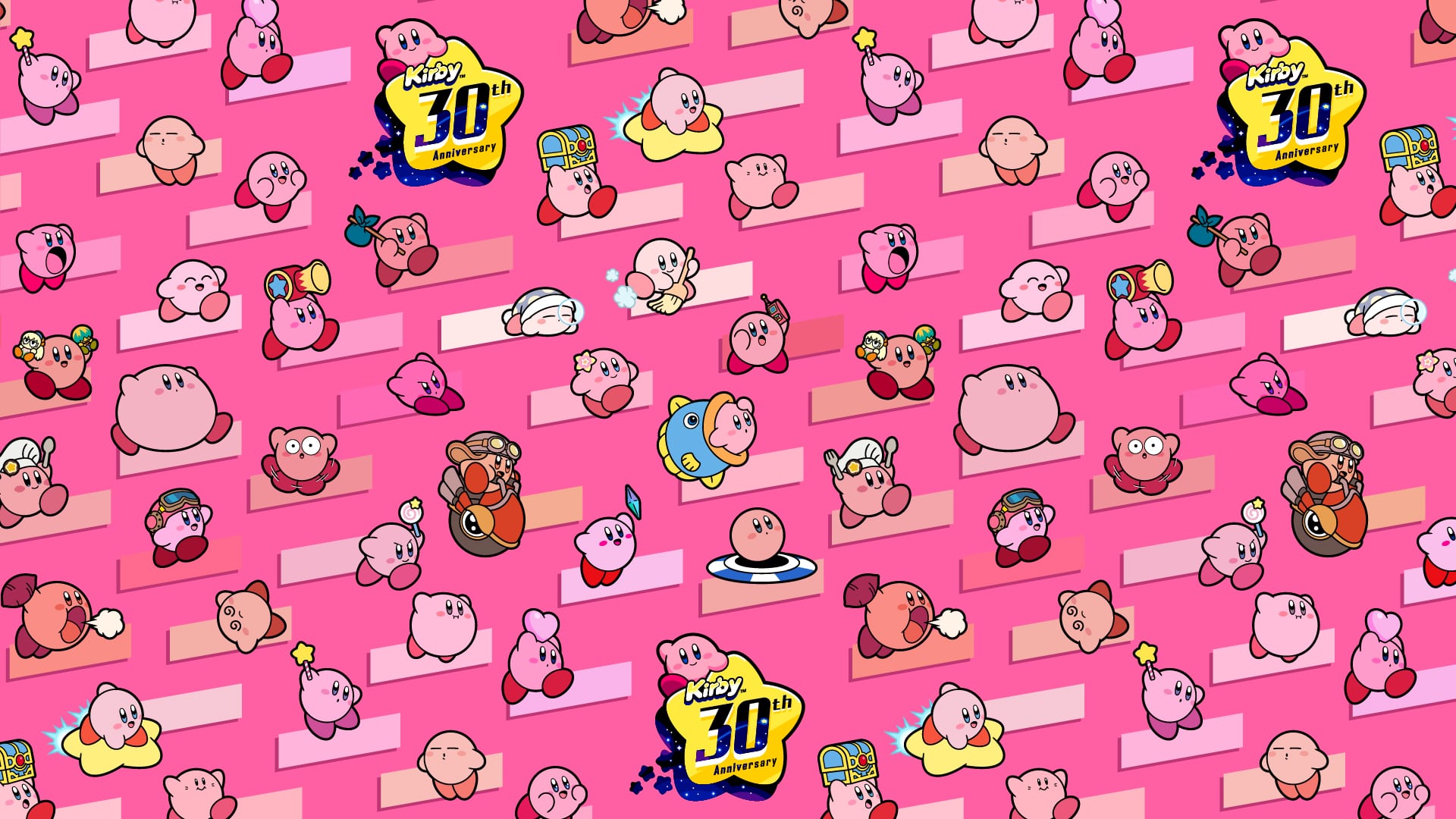
- Kirby's Dream Land
- Kirby's Adventure
- Kirby's Pinball Land
- Kirby's Dream Course
- Kirby's Avalanche
- Kirby's Dream Land 2
- Kirby's Block Ball
- Kirby's Toy Box
- Kirby Super Star
- Kirby Star Stacker
- Kirby's Dream Land 3
- Kirby 64: The Crystal Shards
- Kirby Tilt 'n' Tumble
- Kirby: Nightmare in Dream Land
- Kirby Air Ride
- Kirby & The Amazing Mirror
- Kirby Canvas Curse
- Kirby: Squeak Squad
- Kirby's Epic Yarn
- Kirby Mass Attack
- Kirby's Return to Dream Land
- Kirby: Triple Deluxe
- Kirby and the Rainbow Curse
- Kirby Planet Robobot
- Kirby Star Allies
- Kirby and the Forgotten Land
Created by Masahiro Sakurai when he was just 19 years old, Kirby is one of Nintendo's most popular characters. While many assumed that Kirby was a ghost due to the box art on the western release of Kirby's Dream Land, Sakurai always intended his lovable hero to be pink (Miyamoto's first choice of yellow eventually became the second player default color in the few multiplayer Kirby games that are available).
With his games mainly developed by HAL Laboratory, Kirby has never really been a top-tier draw for Nintendo in comparison to the likes of Mario and The Legend of Zelda, but the pink puffball has arguably appeared in some genuinely innovative and creative games over the last 30 years. Over time, Kirby even became a key member of the Super Smash Bros. series in the process. Below, we've put together a guide to the best-known games in the Kirby series to celebrate the 30th anniversary of the pink, inhaling hero.
Kirby's Dream Land
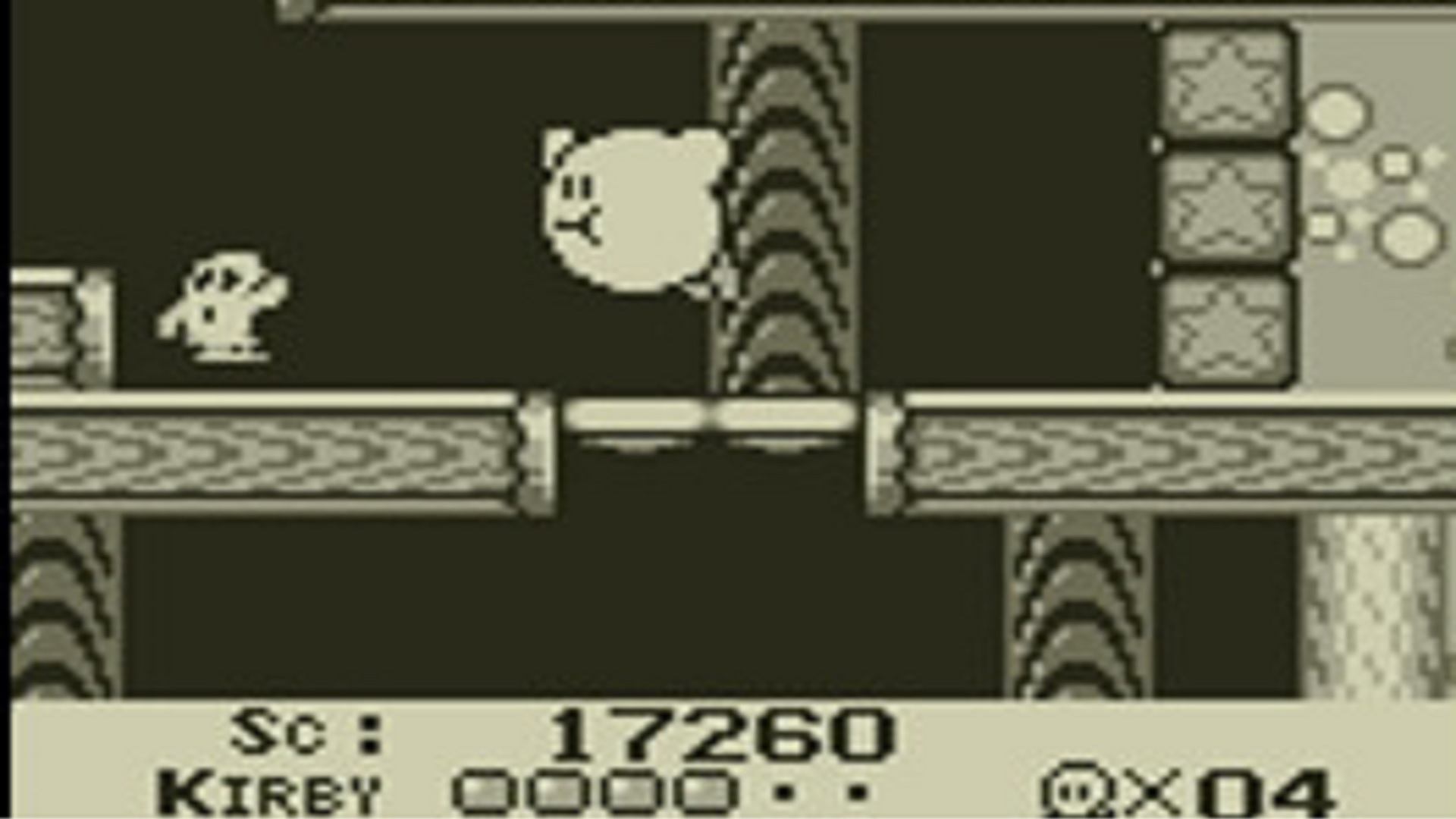
Platform: Game Boy
Year: 1992
Masahiro Sakurai's first Kirby game wasn't just a highly enjoyable Game Boy release – it also introduced many of the tropes that would go on to define the series. Kirby's ability to inhale enemies instantly made him stand apart from other video game characters, while his ability to fly made it much easier to navigate the stages. Dream Land also introduced the concept of Warp Stars, recurring bosses like Whispy Woods and King Dedede (Kirby's equivalent of Bowser) and the charming dance he performs at the end of each stage. While relatively easy (flying lets you bypass many of the game's hazards) it is possible to unlock a harder difficulty, which makes things a little more challenging.
Kirby's Adventure
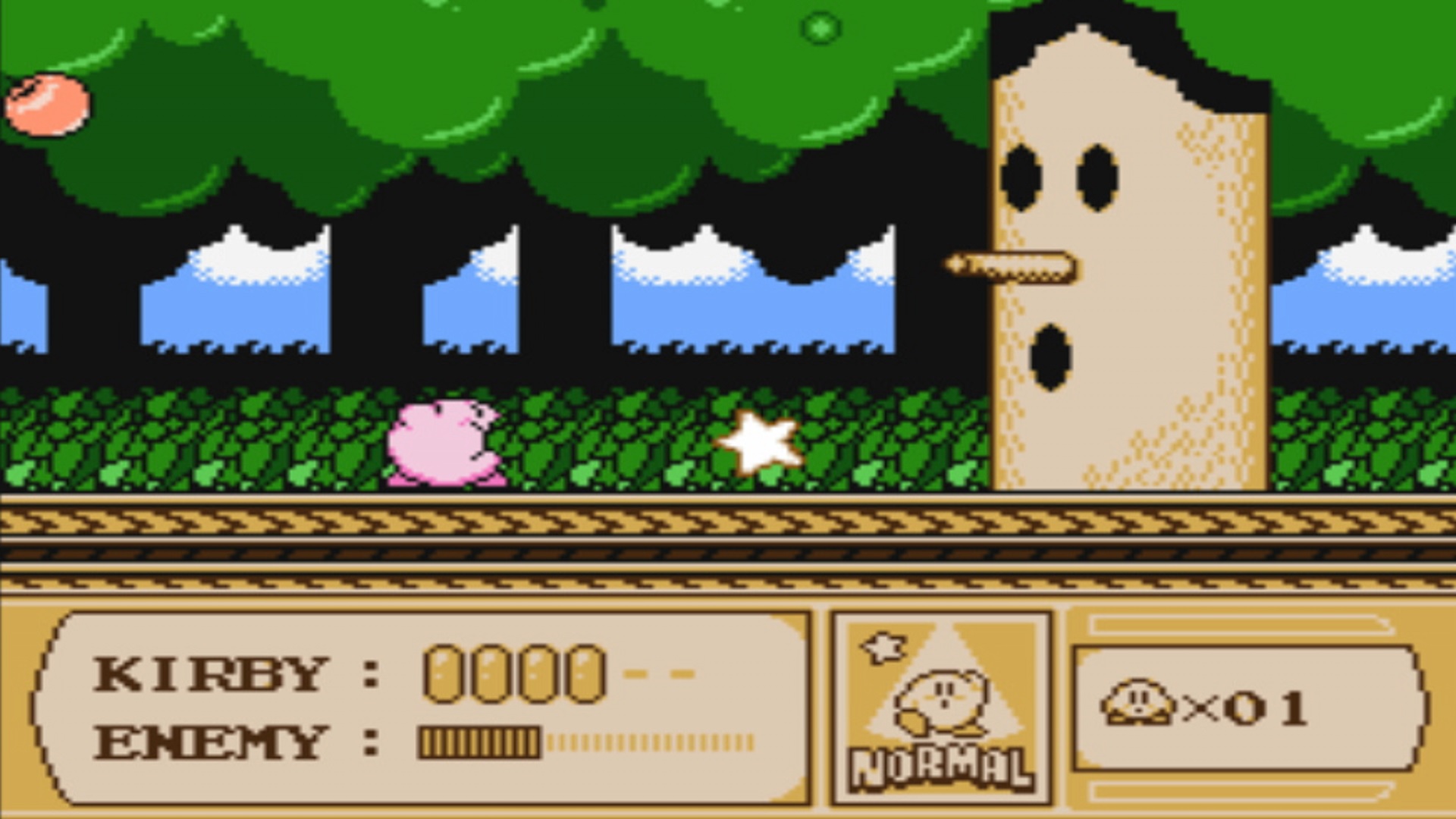
Platform: NES
Year: 1993
Additional mechanics were introduced into Kirby's second game, many of which are still used today. Sakurai's lovable pink blob now had the ability to dash; he could pull off a handy slide attack and, perhaps most importantly, could now copy the abilities of certain enemies that he inhaled. This last mechanic dramatically changed the gameplay, making some areas of the game harder or easier depending on what you had equipped and allowed Kirby to do everything from use a sword to breathe fire. In addition to featuring numerous fun minigames and a large number of levels to plough through, Kirby's Adventure is also notable for introducing Meta Knight, an antihero who regularly pops up throughout the series. There's no denying it's a hell of a lot of fun to play.
Kirby's Pinball Land
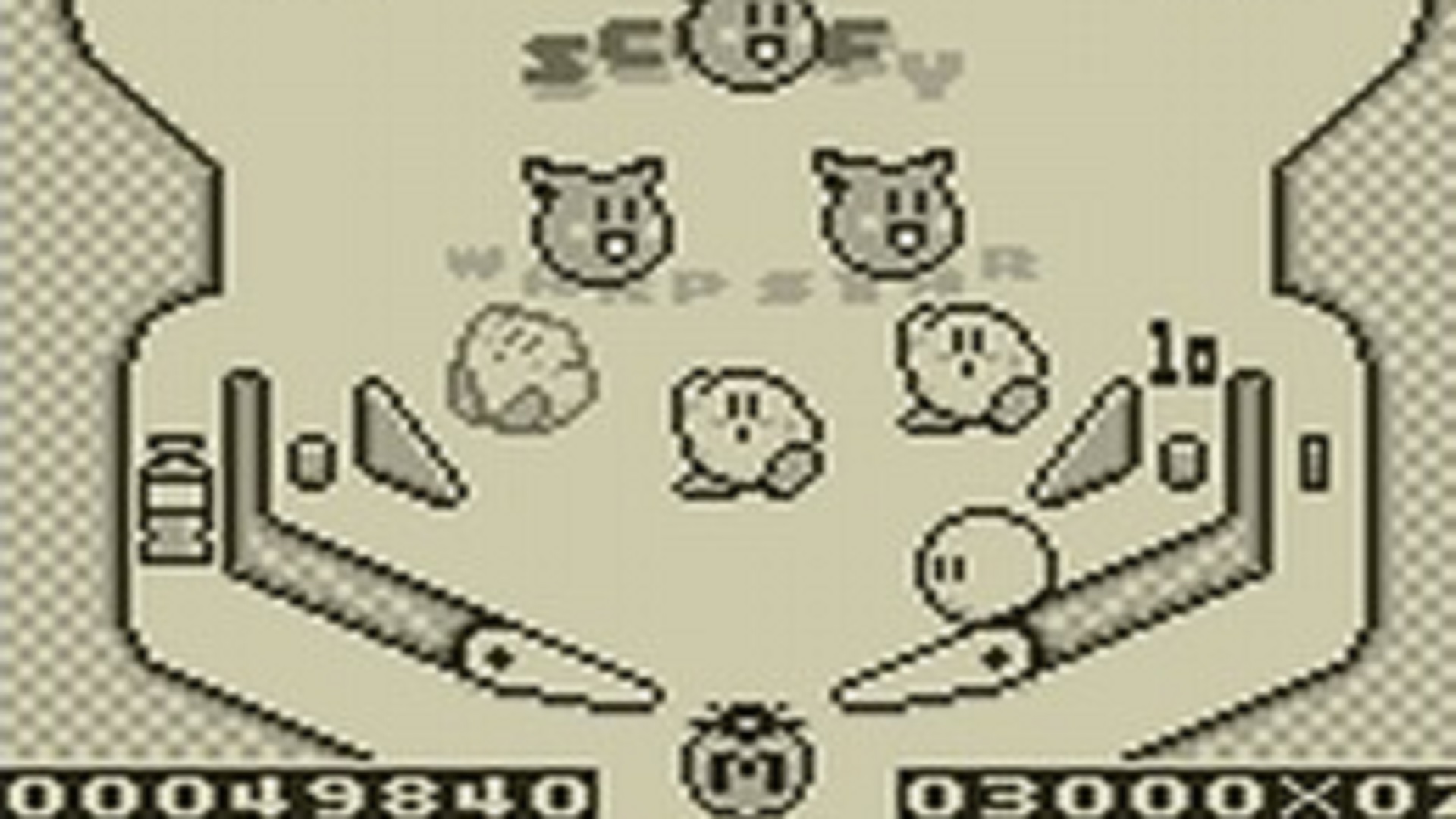
Platform: Game Boy
Year: 1993
Sign up to the GamesRadar+ Newsletter
Weekly digests, tales from the communities you love, and more
Kirby's first spin-off is an excellent pinball game that still plays brilliantly today. There are three tables controlled by three classic Kirby bosses and each and every one of them is exceptionally well designed. It effortlessly incorporates classic Kirby tropes into the standard pinball gameplay and proved the versatility of HAL Laboratory's incredibly cute mascot.
Kirby's Dream Course
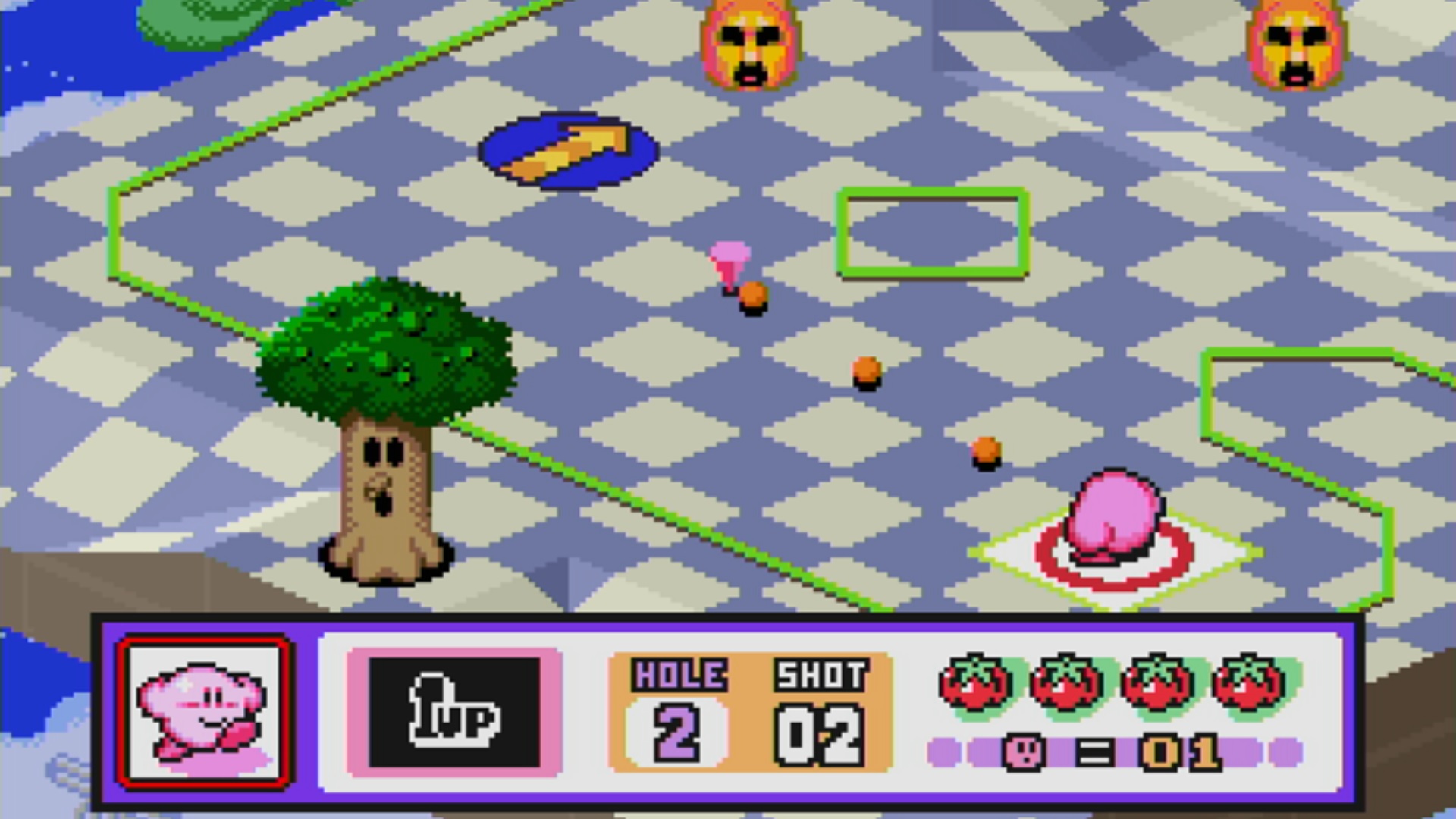
Platform: SNES
Year: 1994
Kirby's first SNES game wasn't the best of starts for the cute fella. Conceptually the idea behind Dream Course is sound - a rather colourful take on crazy golf. While the execution is somewhat lacking, there's no denying that it's a very charming take on the sport. The player's aim is to defeat every on-screen enemy, which in turn will turn the last into a hole through which Kirby can escape. As a result, Dream Course offers a surprising amount of strategy because there are numerous ways to approach each stage. It's a pity, then, that it's let down by finicking gameplay. Still, it's certainly an interesting curio among the line-up of Kirby games.
Kirby's Avalanche
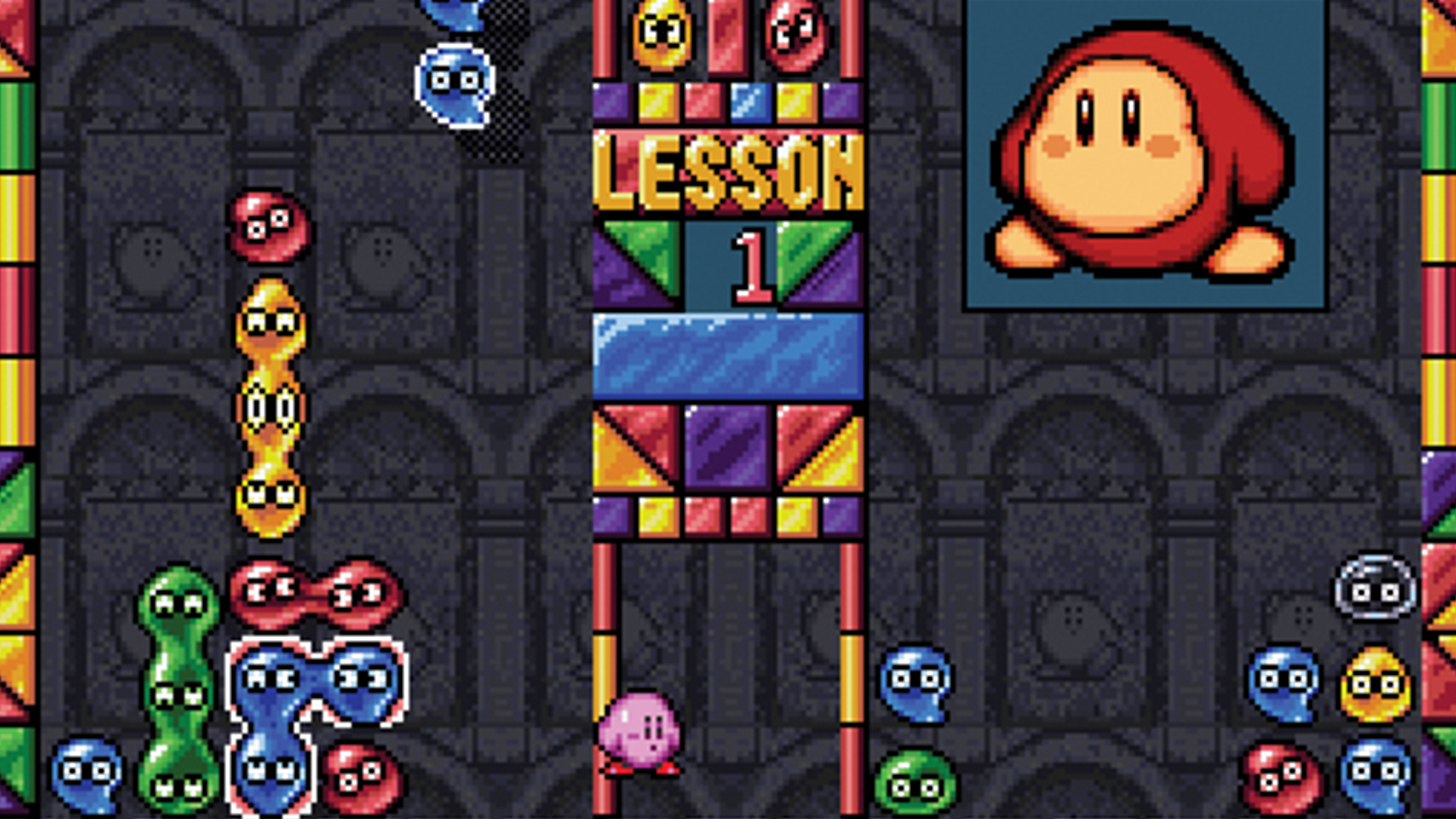
Platform: SNES
Year: 1995
Also known as Kirby's Ghost Trap in Europe, Kirby's Avalanche is nothing more than a sneaky reskin of Puyo Puyo with a trash-talking version of Kirby. As with other versions of Puyo Puyo, the aim is to line up Puyos to connect four or more of the same colour. Your goal is to hopefully stack the little creatures in such a way that they will trigger additional chains that will send boulders across to your opponent on the other side of the screen. It's an amazing game, particularly when played competitively.
Kirby's Dream Land 2
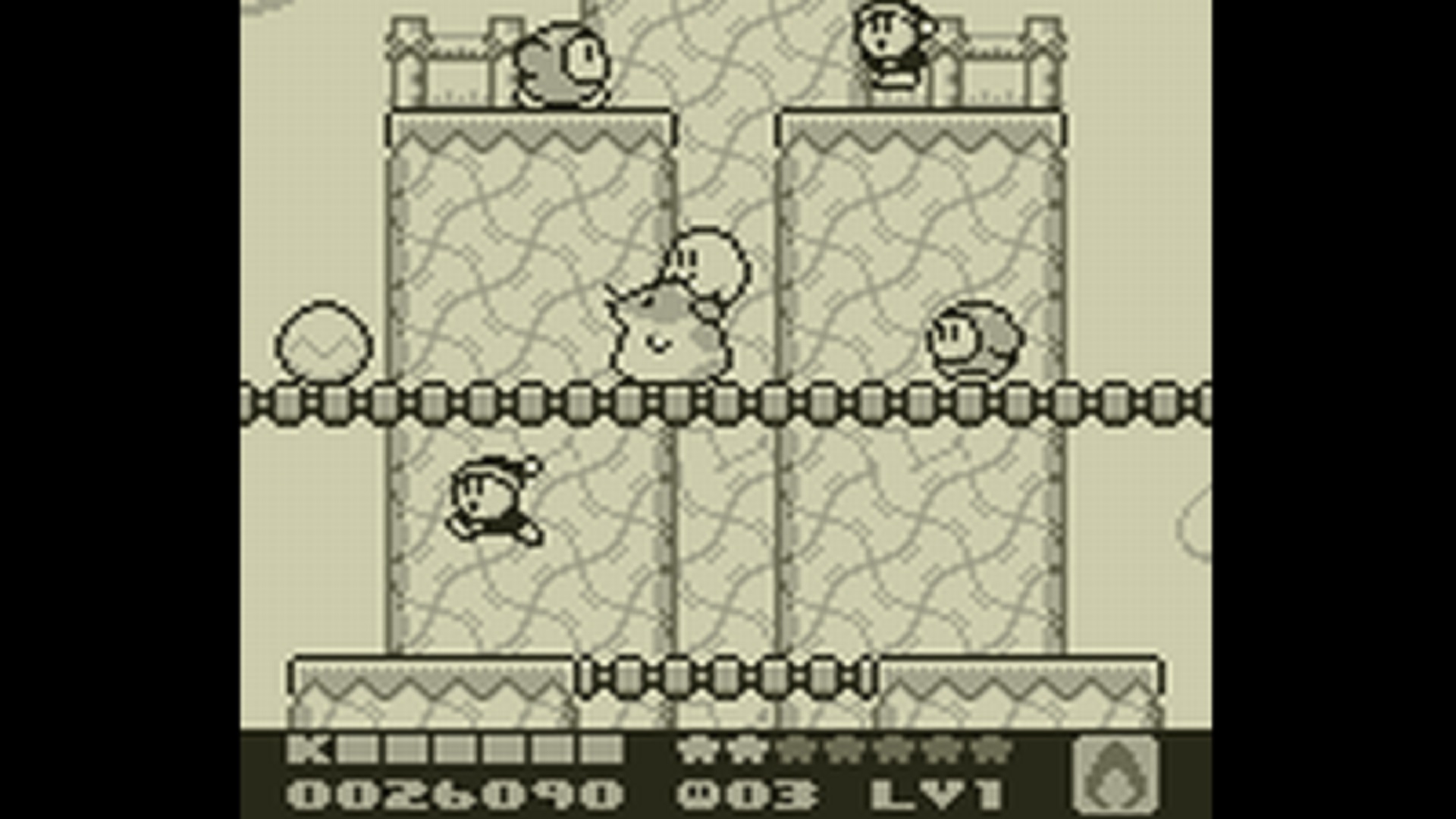
Platform: Game Boy
Year: 1995
Clearly feeling that its franchise wasn't saccharinely cute enough, HAL Laboratory added an extra dollop of sweetness in the form of three animal helpers that would aid Kirby as he navigated Dream Land. Rick the hamster, Coo the owl, and Kine the fish are not only delightful to look at, but also augment Kirby's copy abilities in a number of useful ways. Like many Game Boy games at the time, it was due a DX upgrade to the Game Boy Color, but was eventually cancelled.
Kirby's Block Ball
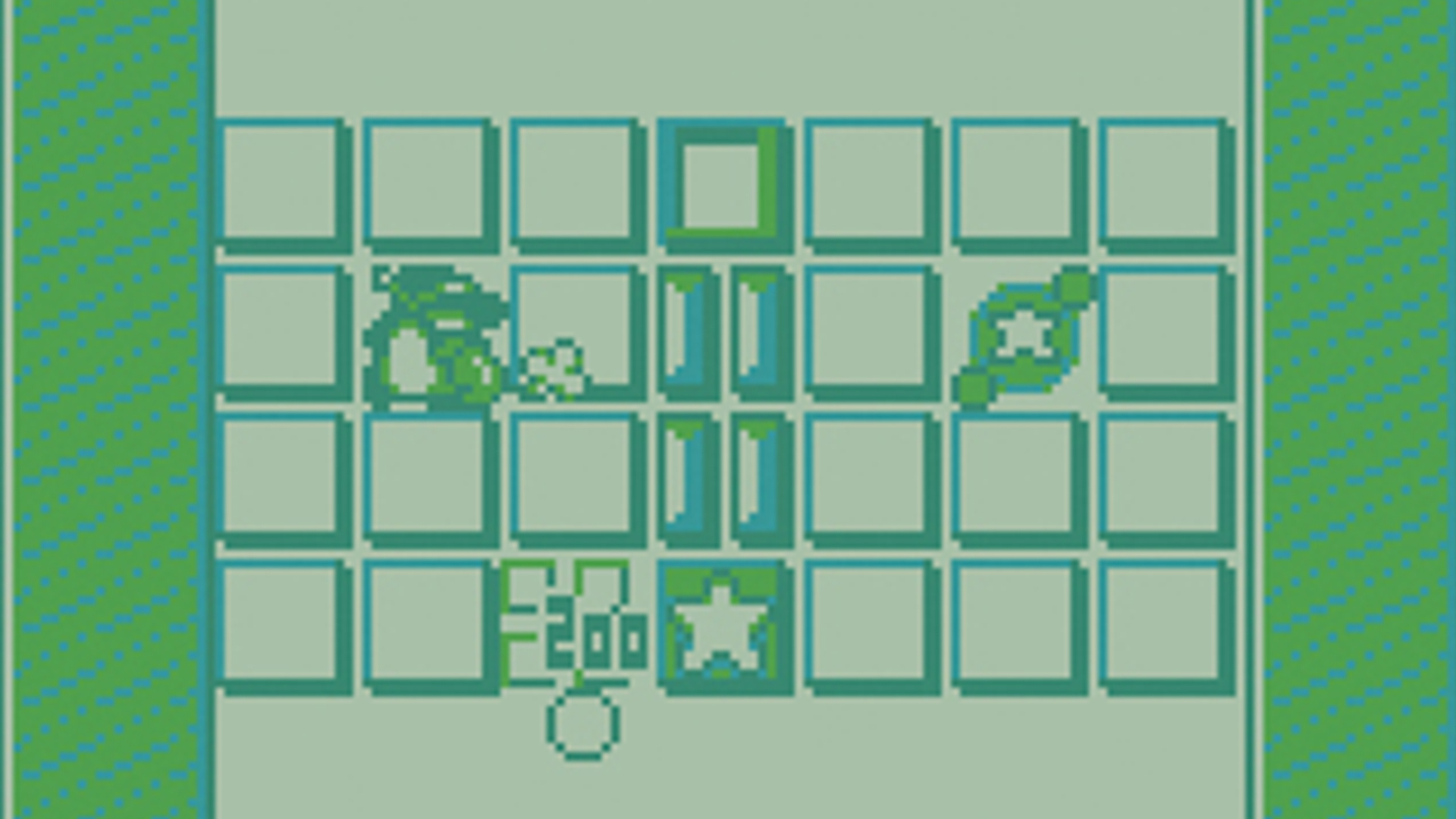
Platform: Game Boy
Year: 1995
Created in collaboration with Nintendo Research & Development 1, Kirby's Block Ball is a refreshing take on Breakout that should make every Game Boy owner forget the risible Alleyway that helped launch the system. Each single stage screen not only features a number of increasingly complex block configurations, but also adds numerous mechanics that capture the spirit of Kirby. Unique power-ups let Kirby interact with otherwise indestructible blocks, while there's a wealth of minigames and secrets to discover. It even features some entertaining boss encounters.
Kirby's Toy Box
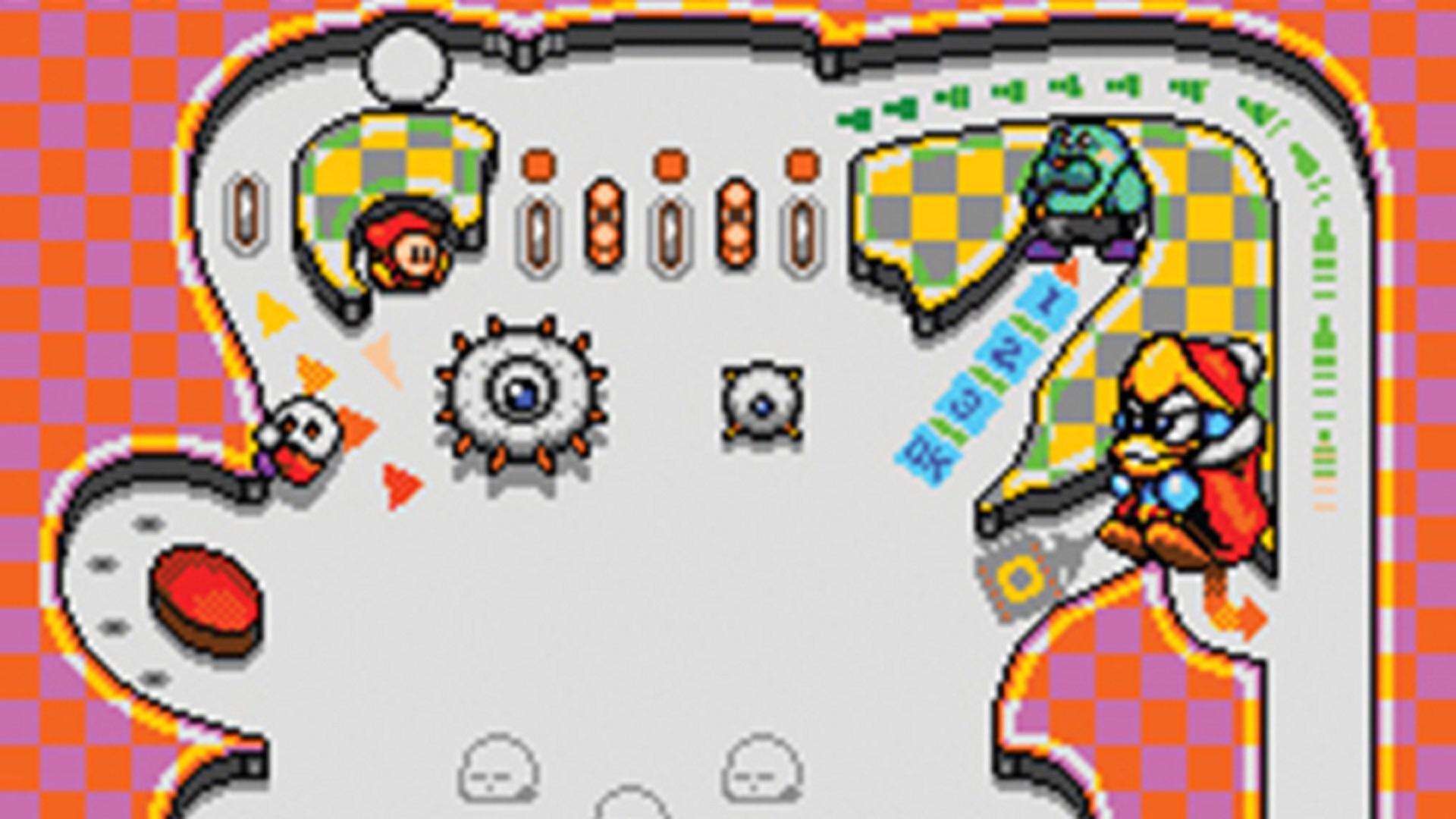
Platform: Super Famicom Satellaview
Year: 1995
Kirby games don't really tend to get more obscure than this little oddity. Not only was it confined to Japan, but it was exclusively available on Nintendo's Satellaview system, the company's first available download service. There are eight games in total: Baseball, Pinball, Balls Round And Round, Star Break, Arranging Balls, Cannonball, Bally Rally, Pachinko and they all revolve around very limited activities, from guiding Kirby through an obstacle course to an interesting take on Scorched Earth and Worms. They're quite simplistic-looking for Super Famicom releases, but that's to be expected considering the archaic download infrastructure that was in place at the time. They're also incredibly hard to find now as they could only be downloaded during specific broadcast times.
Kirby Super Star
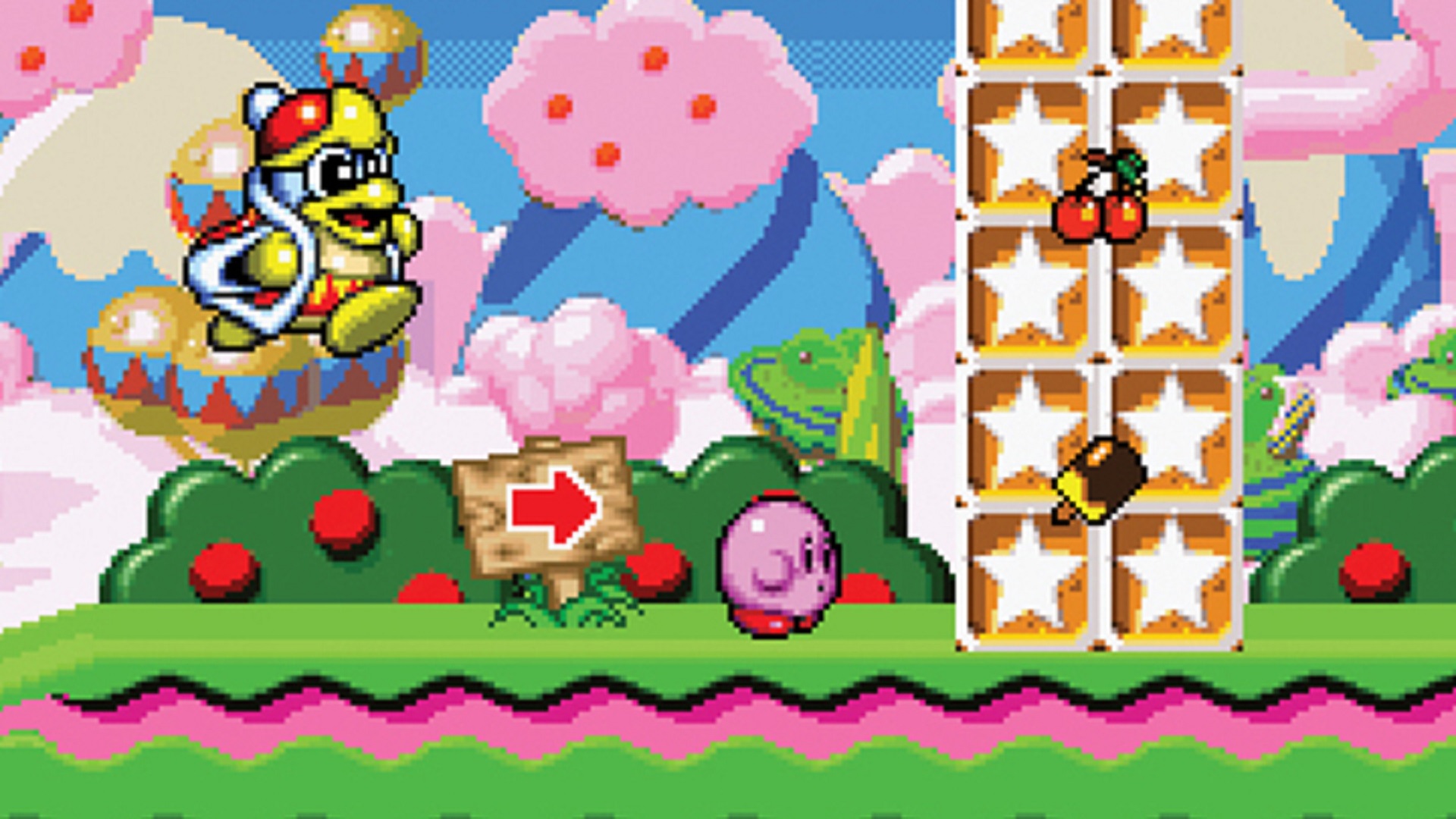
Platform: SNES
Year: 1996
Also known as Kirby's Fun Pak, this delightful collection of eight minigames is widely regarded to be one of the franchise's best games. The charming collection includes an aesthetically improved (but smaller) version of Dream Land called Spring Breeze as well as the excellent Gourmet Race, which pits you in a frantic food collecting dash against King Dedede. It's also notable for introducing Helpers (which can be controlled by the AI or a second player) and adding hats for Kirby that better highlight his current copy ability.
Kirby Star Stacker
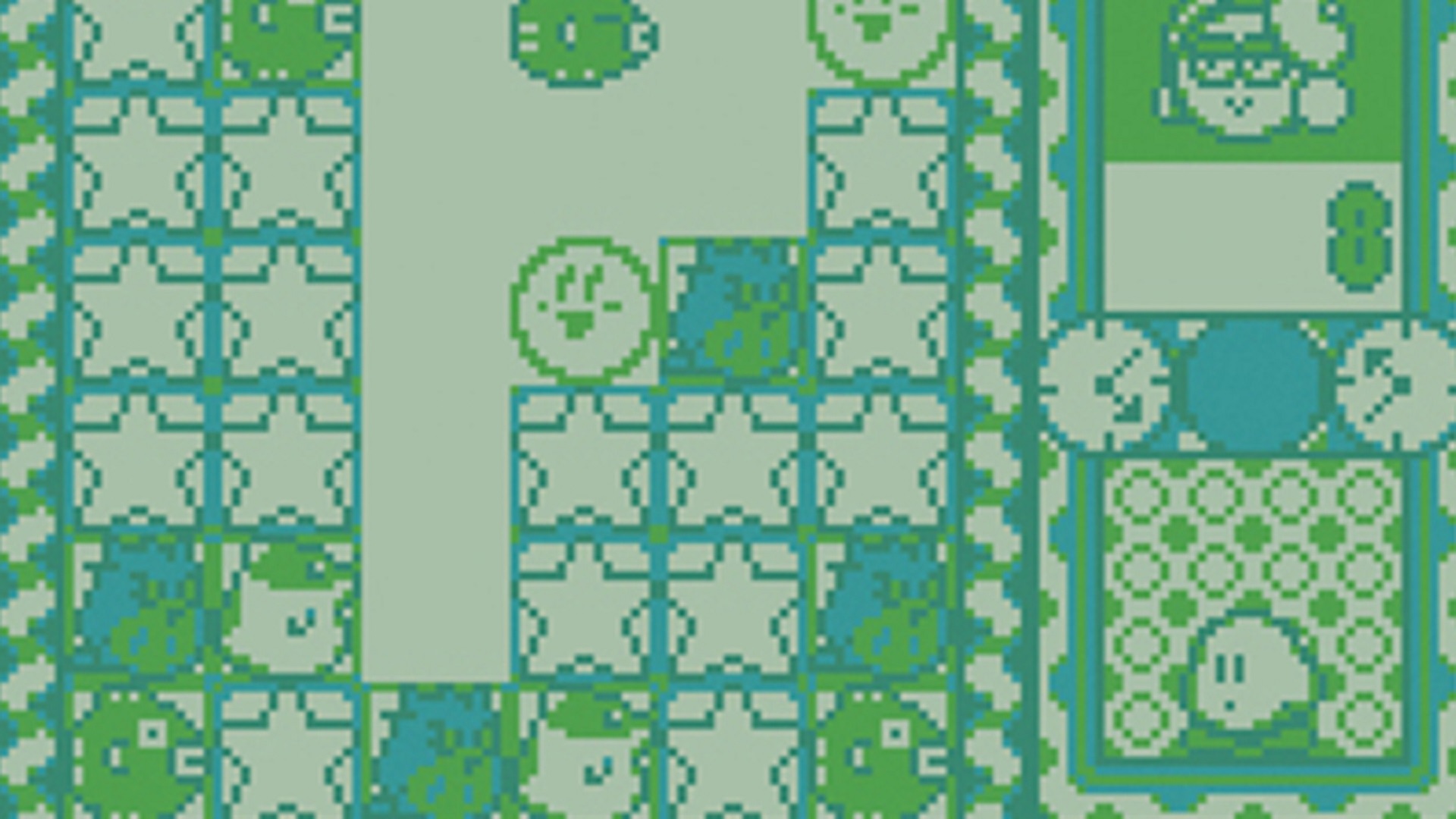
Platform: Game Boy
Year: 1997
The aim of this entertaining puzzler is to clear a set number of stars by sandwiching them between two matching blocks (based on Kirby's animal friends from Dream Land 2). Star Stacker features four distinct modes. Round Clear is the base game spread across several difficulty levels, VS lets you play against another player off a single cartridge, Challenge is effectively an endless mode, while Time Attack gives you three minutes to clear as many stars as possible.
Kirby's Dream Land 3
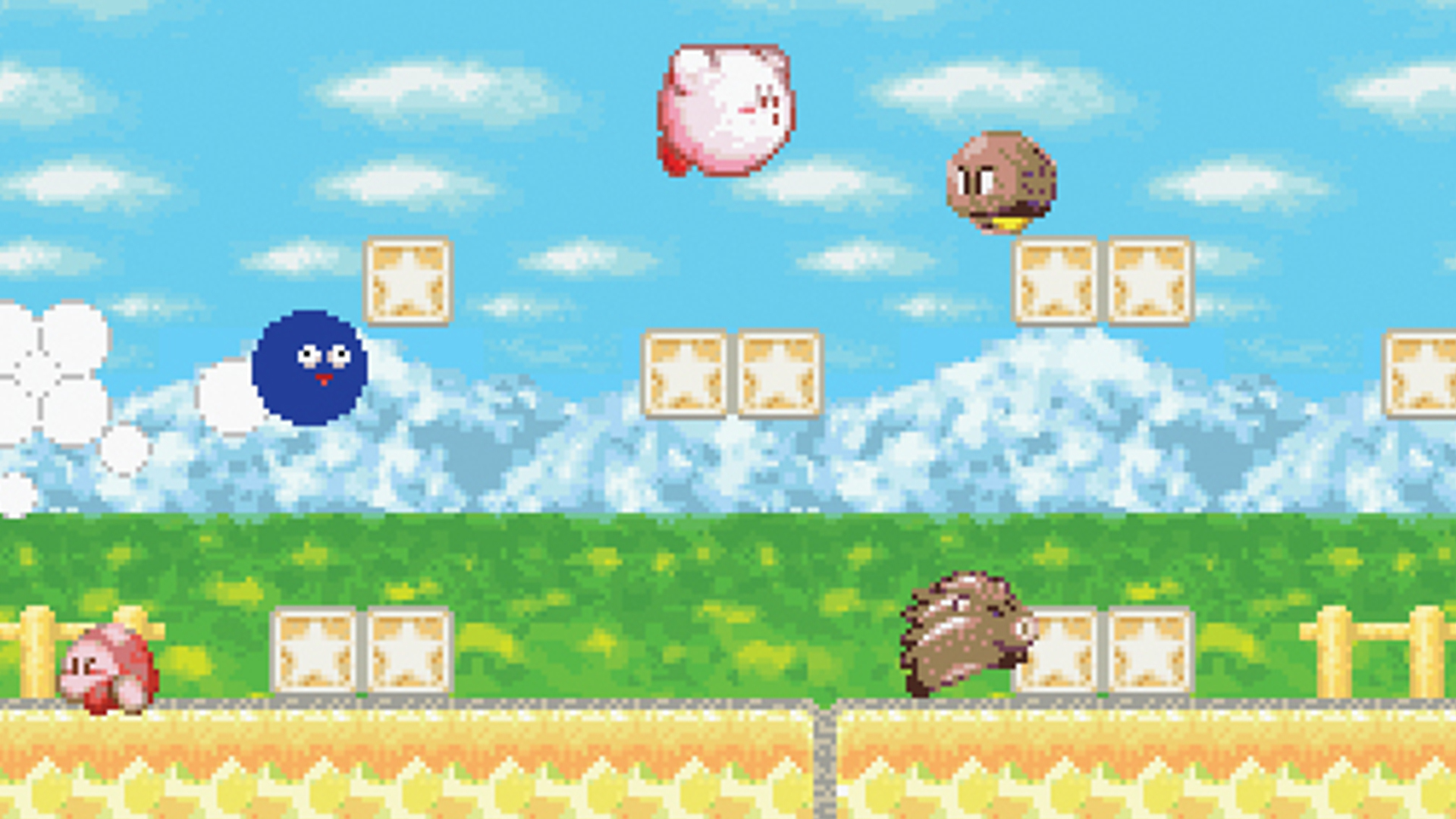
Platform: SNES
Year: 1997
Released after the launch of the N64, many gamers missed out on the third Dream Land game. While it forgoes many of the mechanics that were introduced in Kirby's Fun Pack, it does add several new animal friends that aid Kirby in his quest, including Nago the cat and ChuChu the octopus. It's also aesthetically different from all the other Kirby games thanks to slick pastel-like aesthetics and crayon-drawn backgrounds. Sadly the fantastic style compromises the gameplay as it features large amounts of slowdown.
Kirby 64: The Crystal Shards
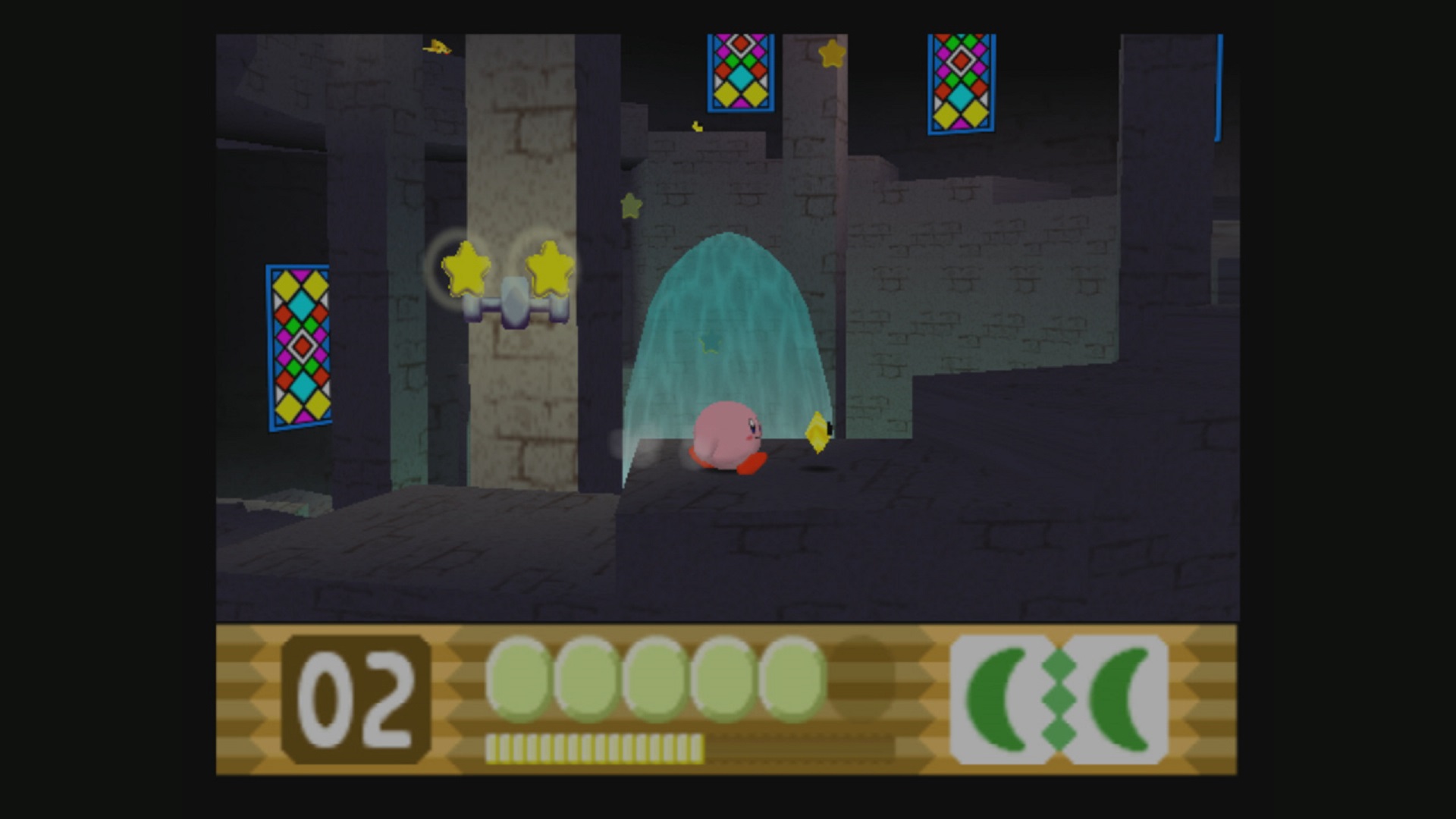
Platform: N64
Year: 2000
Where Mario and Zelda broke exciting new ground on the N64, Kirby was simply content to appear in a capable platformer. The biggest change to the gameplay is that Kirby can now inhale two copy abilities and combine them to create even more powerful attacks. The downside though is that the pink blob is no longer able to fly for indefinite amounts of time. Still, it's yet another charming adventure with some memorable combos - like the one that transform Kirby into a fridge - and new characters.
Kirby Tilt 'n' Tumble
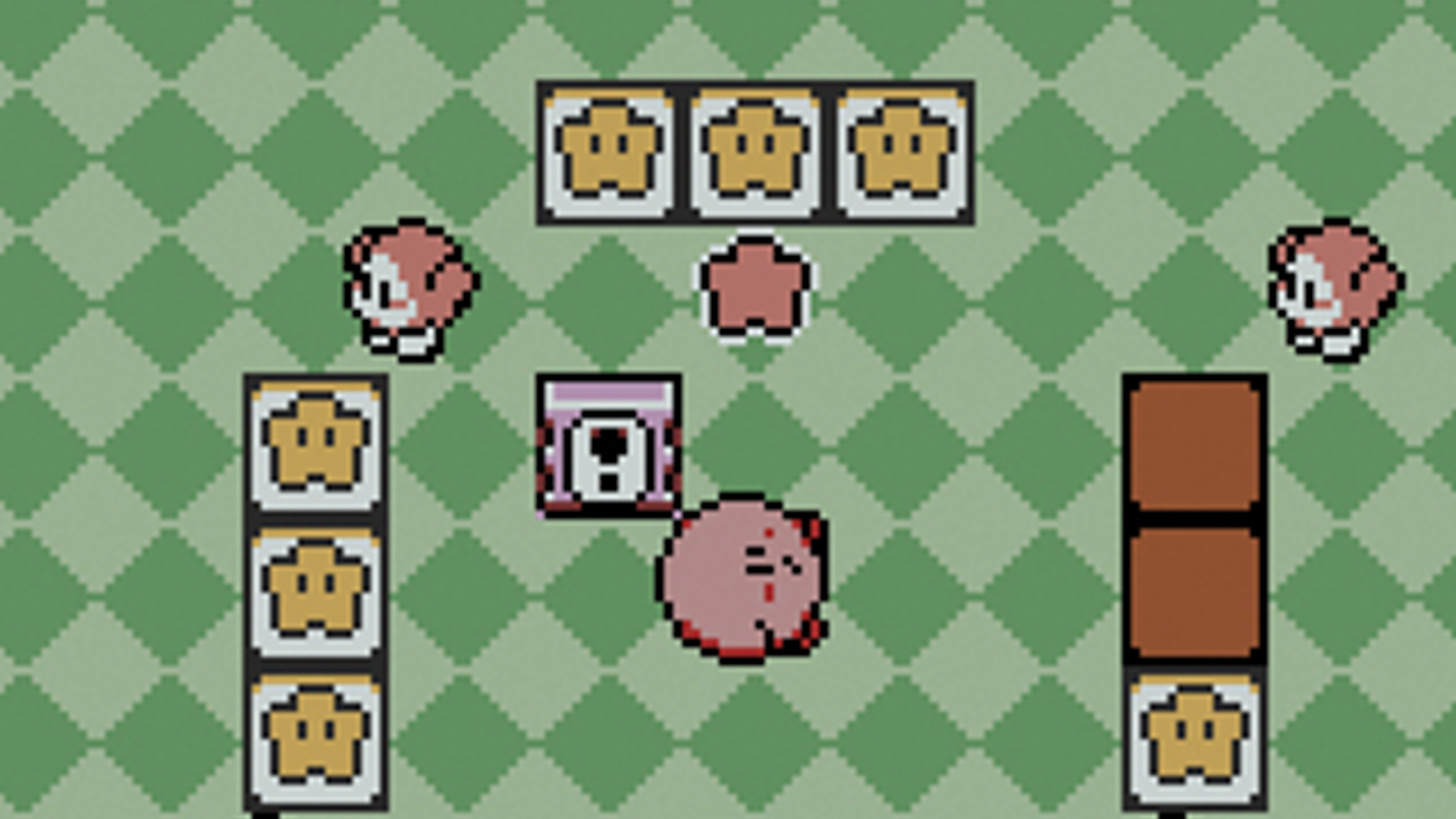
Platform: Game Boy Color
Year: 2001
This is probably one of the most experimental and innovative games in Kirby's repertoire. Released in a clear pink translucent casing, accelerometers are used to roll Kirby around the cleverly designed courses searching for stars, while avoiding holes, bumpers and other annoying hazards. Jerking the Game Boy Color will launch Kirby in the air, transforming enemies into stars, clocks or pep brews, depending on how many times the player uses the move. There are also mini shoot-'em-up stages where Kirby flies and takes down UFOs. A planned sequel for the GameCube that would use the GBA as a controller was eventually cancelled.
Kirby: Nightmare in Dream Land
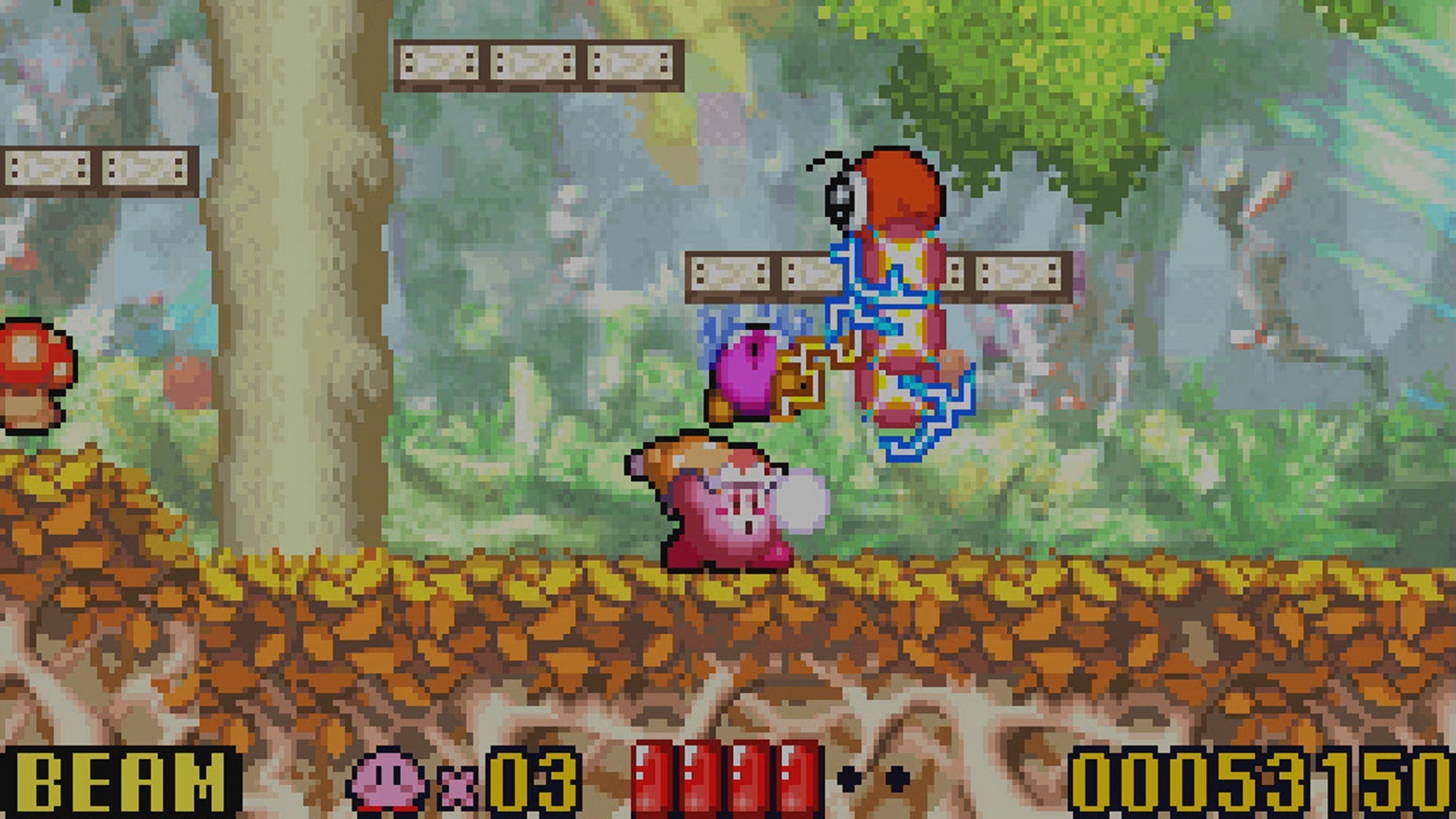
Platform: Game Boy Advance
Year: 2002
This enchanting-looking GBA release is essentially an enhanced update of the original Kirby adventure on the NES. It replaces the original sub games with new ones, lowers the difficulty of the game, introduces hats for many of Kirby's copy abilities and changes how some of the copy abilities work. While the level design and enemy layout is mostly intact, small tweaks have been made in certain sections. Completing Extra mode allows you to play as Meta Knight, who only has three energy bars, relies on a sword instead of copy abilities, and cannot save at any time.
Kirby Air Ride
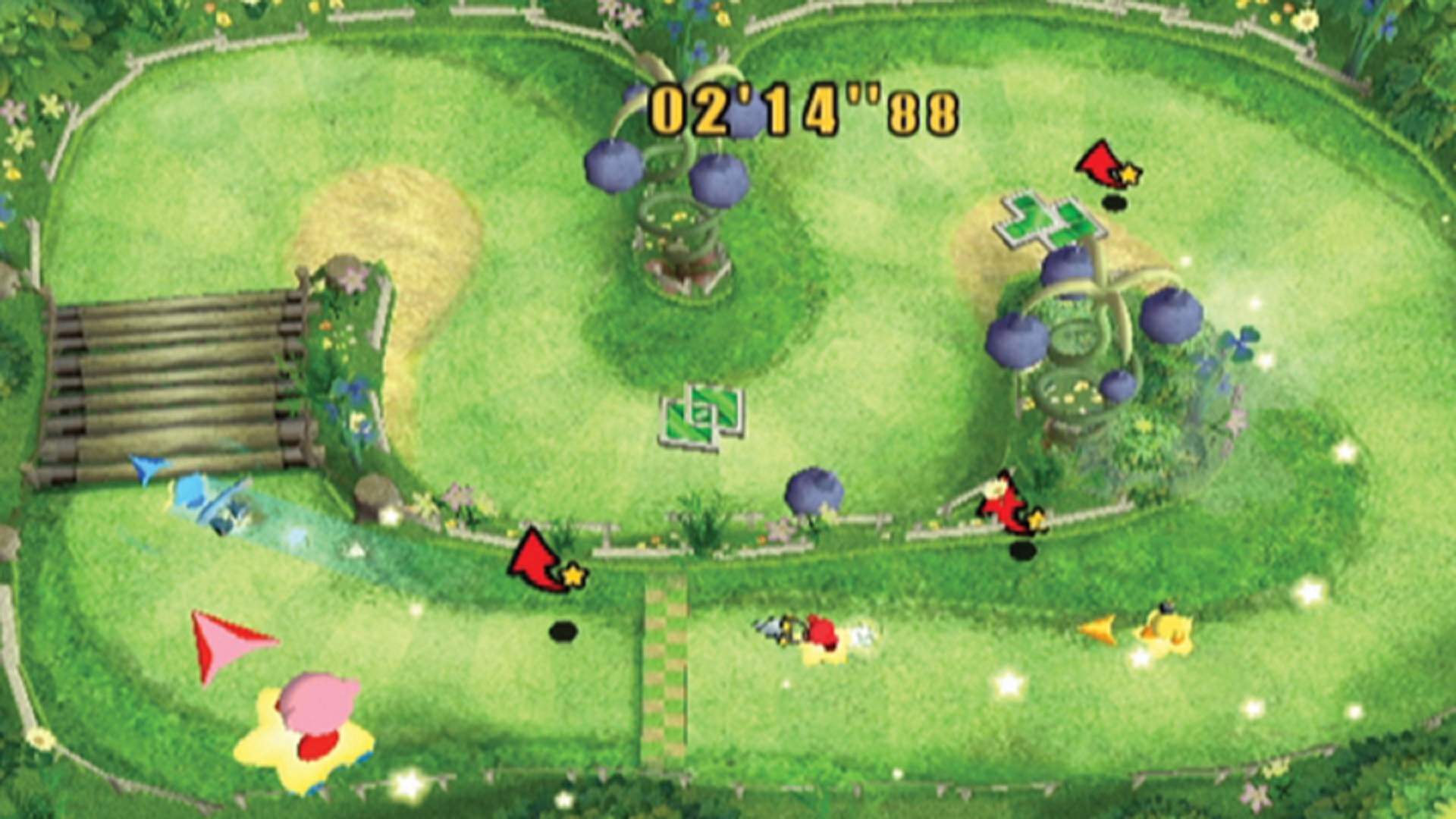
Platform: GameCube
Year: 2003
This spin-off is one of the most divisive games in Kirby's library due to its seemingly simplistic control system. Sharing similarities with the sub-game Kirby Grind from Nightmare In Dream Land, the aim is to race through the colorful locations of Dream Land as quickly as possible. Braking, charging your boost bar, and inhaling nearby enemies is all handled by the A button, while the analogue stick is used to steer. Mastering boosting does take a while to get to grips with, but once it clicks, Air Ride proves itself to be a surprisingly complex little racing game that offers plenty of replay value. In total there are three modes to choose from: Air Ride, which is basic racing, Top Ride, which is viewed from above and utilises far smaller tracks, and City Trial, which is a highly impressive campaign mode with lots of secrets to discover.
Kirby & The Amazing Mirror
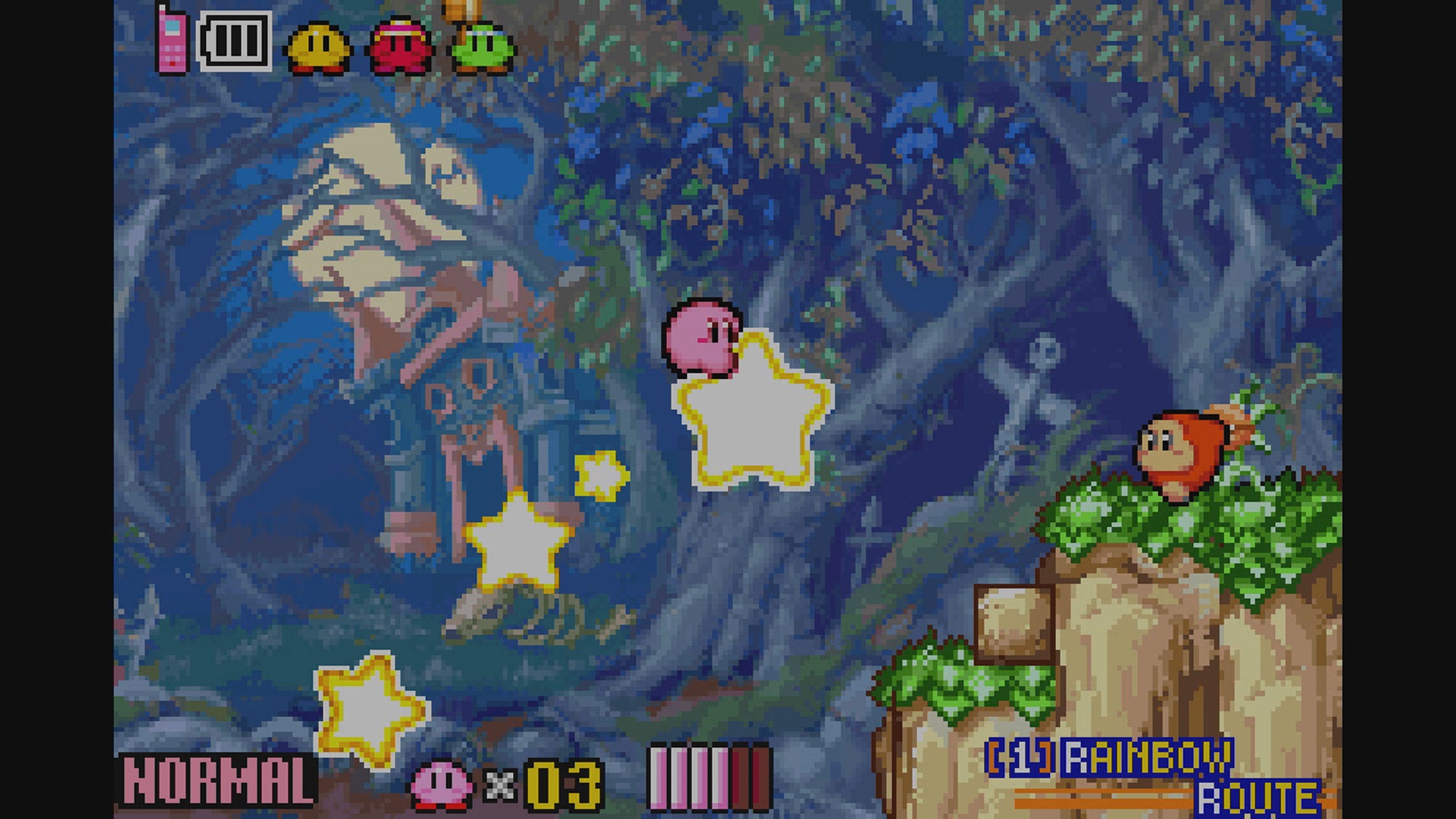
Platform: Game Boy Advance
Year: 2004
While it retains the platform elements of earlier games, the last GBA Kirby title riffs heavily off the Metroidvania template and is far less linear than other releases in the series. It also greatly spices things up by introducing three Kirby helpers that our hero can call on his mobile. The companions offer support as the pink puffball searches for the eight mirror fragments that should restore order to his world.
Kirby Canvas Curse
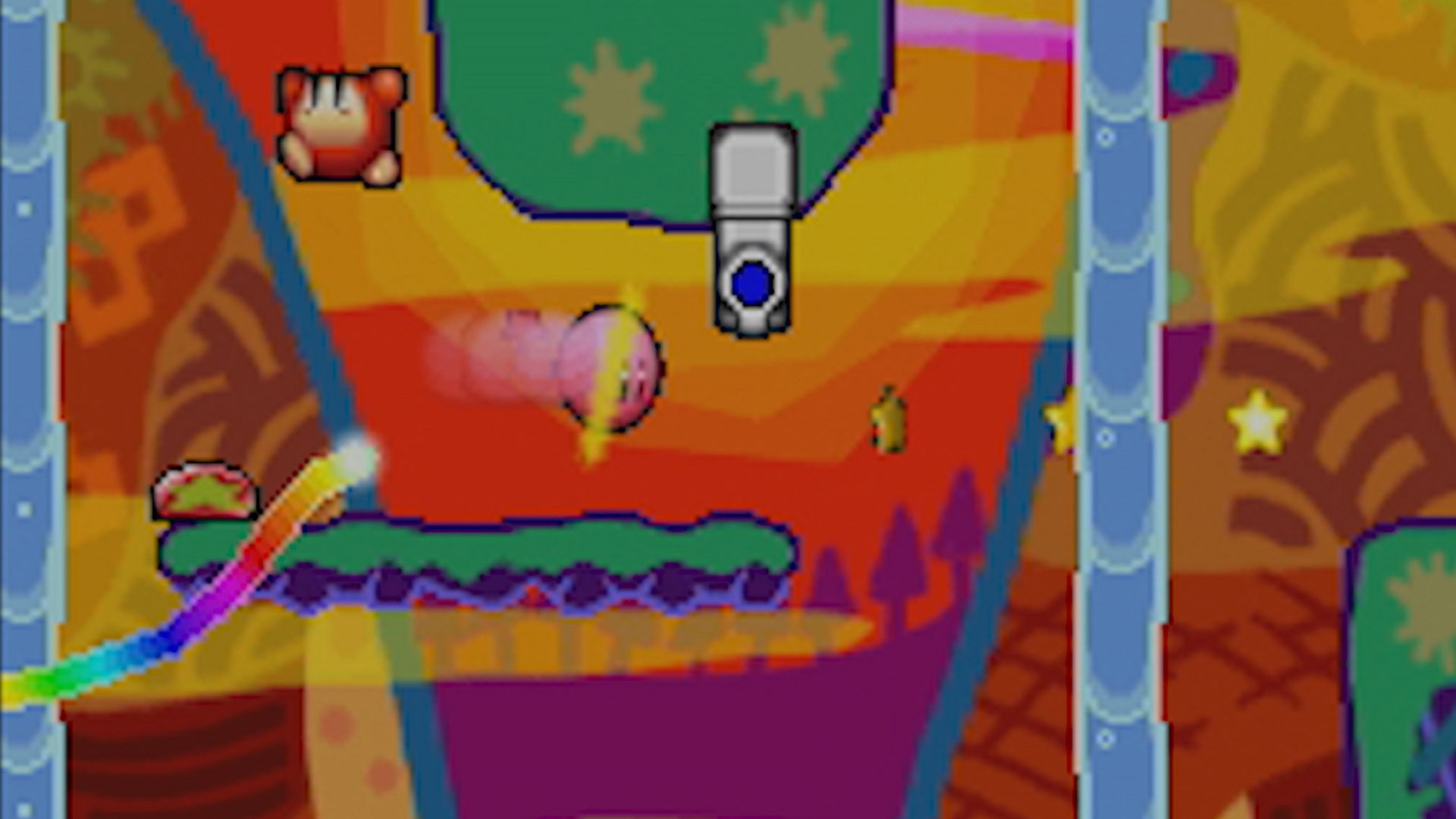
Kirby's first DS adventure is unlike any that came before it. Also known as Kirby Kirby: Power Paintbrush or Touch! Kirby, the player uses the stylus to draw lines for Kirby to travel across, change his direction, and stun enemies by touching them. Additionally, touching Kirby causes him to dash forward (destroying any stunned enemies he hits) or activate any copy abilities he might currently have. The unique way of controlling the stylus offered something fresh for the pink puffball. And the fun sub-games also make extensive use of the stylus in inventive ways.
Kirby: Squeak Squad
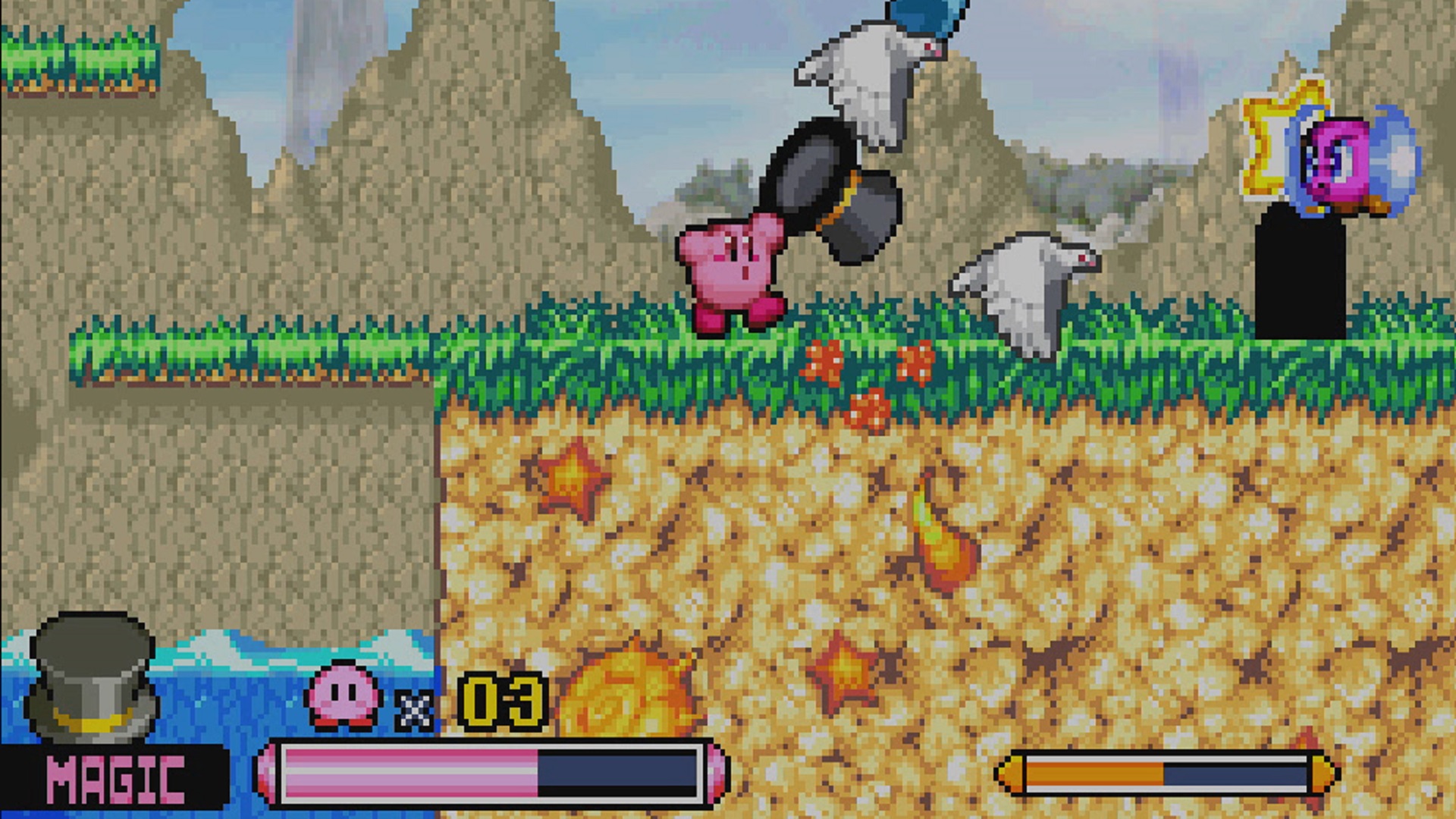
Platform: Nintendo DS
Year: 2006
After the creativity of Touch! Kirby, the pink puffball's second DS adventure is a far more standard affair. Also known as Kirby: Mouse Attack in Europe, the game pits Kirby against the Squeak Squad with the goal of retrieving a large number of treasure chests - which typically house keys to secret levels and worlds. One new addition to the series is that Kirby can inhale items encased in bubbles and store them in his stomach, which can then be combined to create more powerful items.
Kirby's Epic Yarn
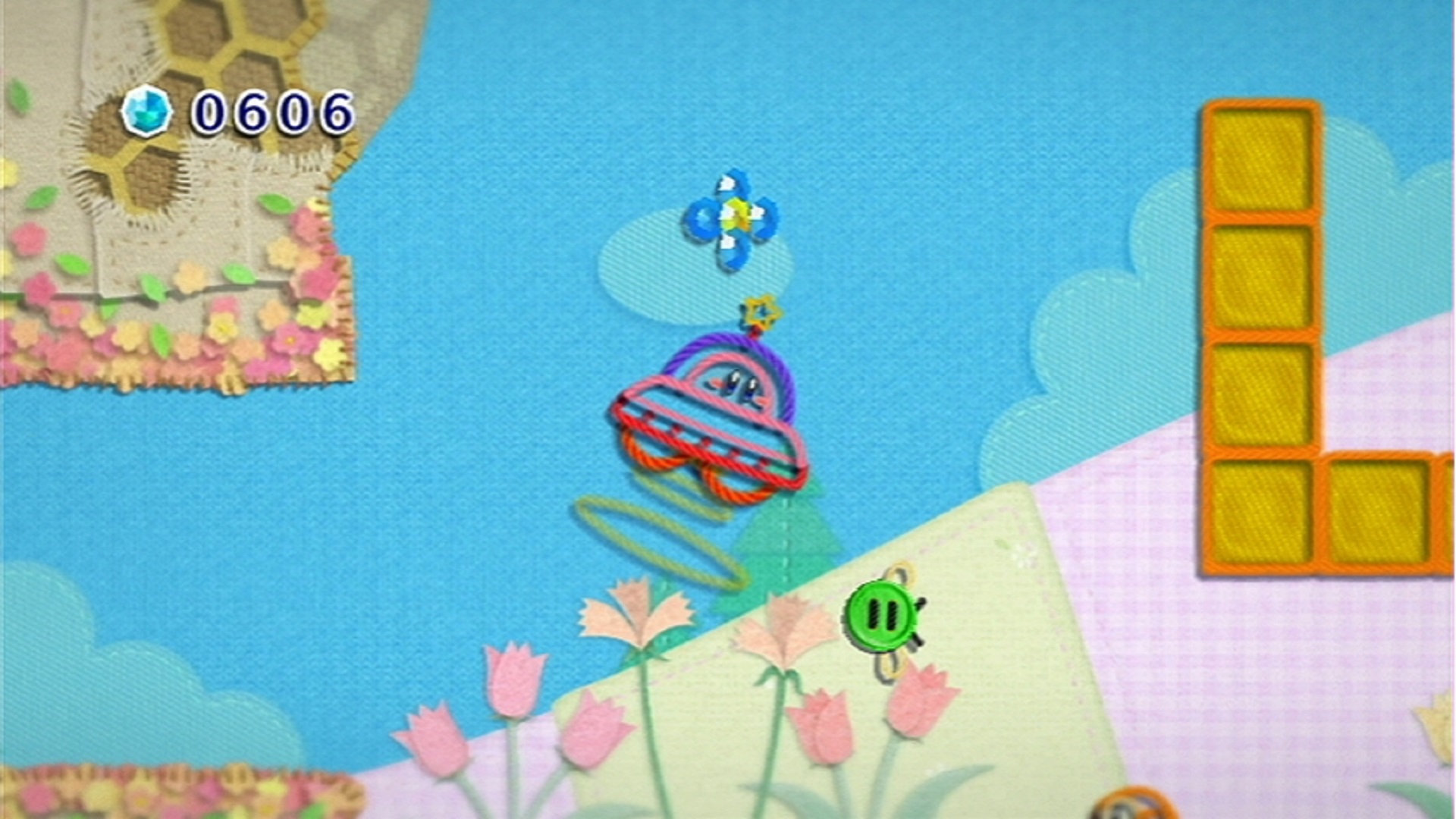
Platform: Wii
Year: 2010
Created by Good Feel, this remains one of the best-looking games on the Wii thanks to its distinctive yarn-based aesthetic. It's also one of the most interesting Kirby games as the little tyke can no longer inhale enemies or fly. Instead, he relies on a trusty whip that can unravel enemies and the ability to transform into several different forms, including a top, parachute, train and rocket. Constantly inventive and with a fun two-player mode, Kirby's first Wii adventure is as memorable as it is charming. The yarn version of pink puffball also found it's way on the 3DS in 2019 with Kirby's Extra Epic Yarn, which included additional features and modes.
Kirby Mass Attack
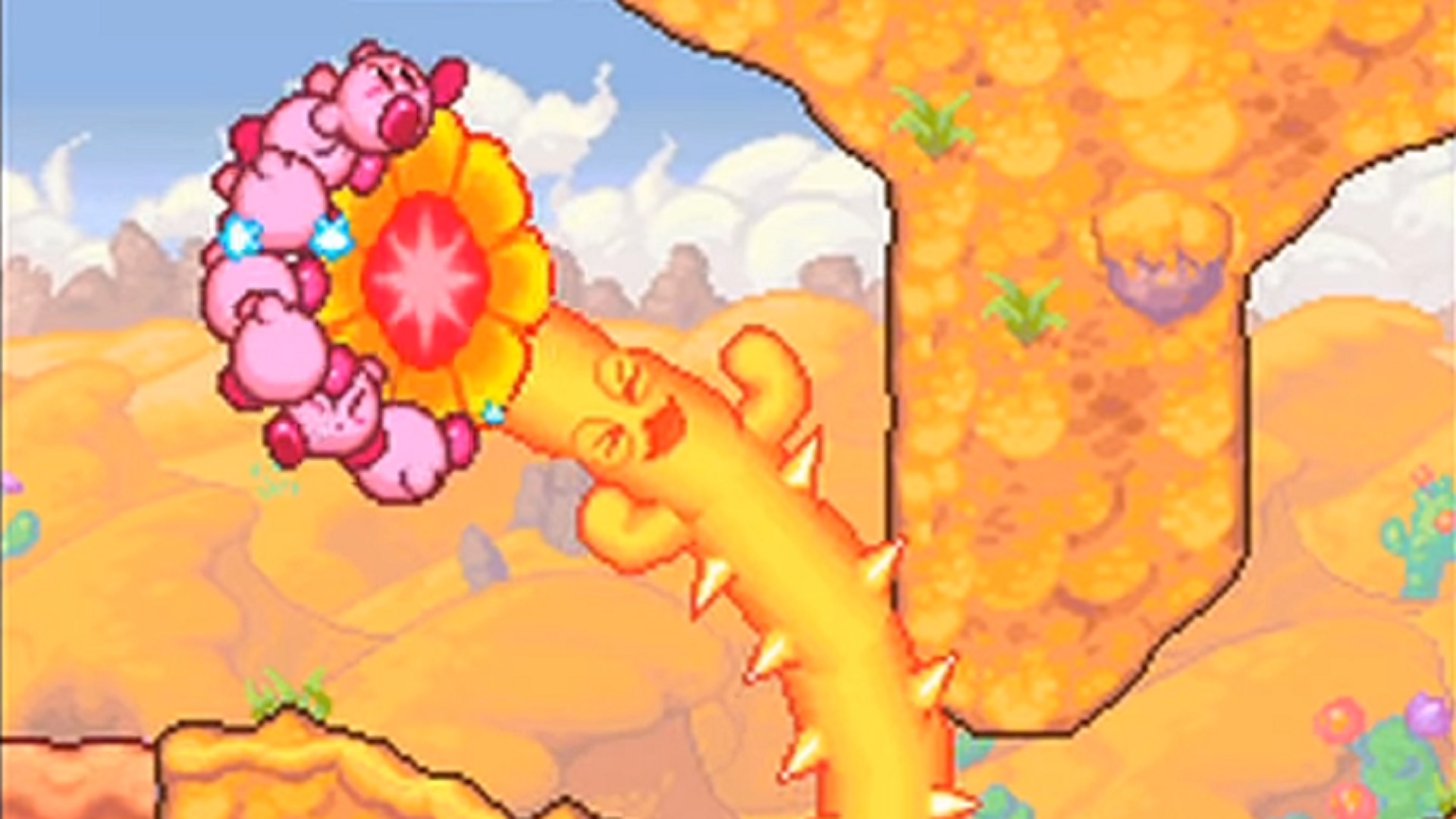
Platform: Nintendo DS
Year: 2011
This is another innovative Kirby game that makes exceptional use of the DS stylus and has you controlling a small army of ten Kirbys. You can fling them about the screen to attack enemies, solve puzzles, and generally cause all sorts of mayhem. Boss encounters are well executed and require clever tactics to destroy them, while the presentation and visuals are some of the best the series has seen. It's wonderfully approachable too, and you'll soon be flinging your cute army about with wild abandonment.
Kirby's Return to Dream Land
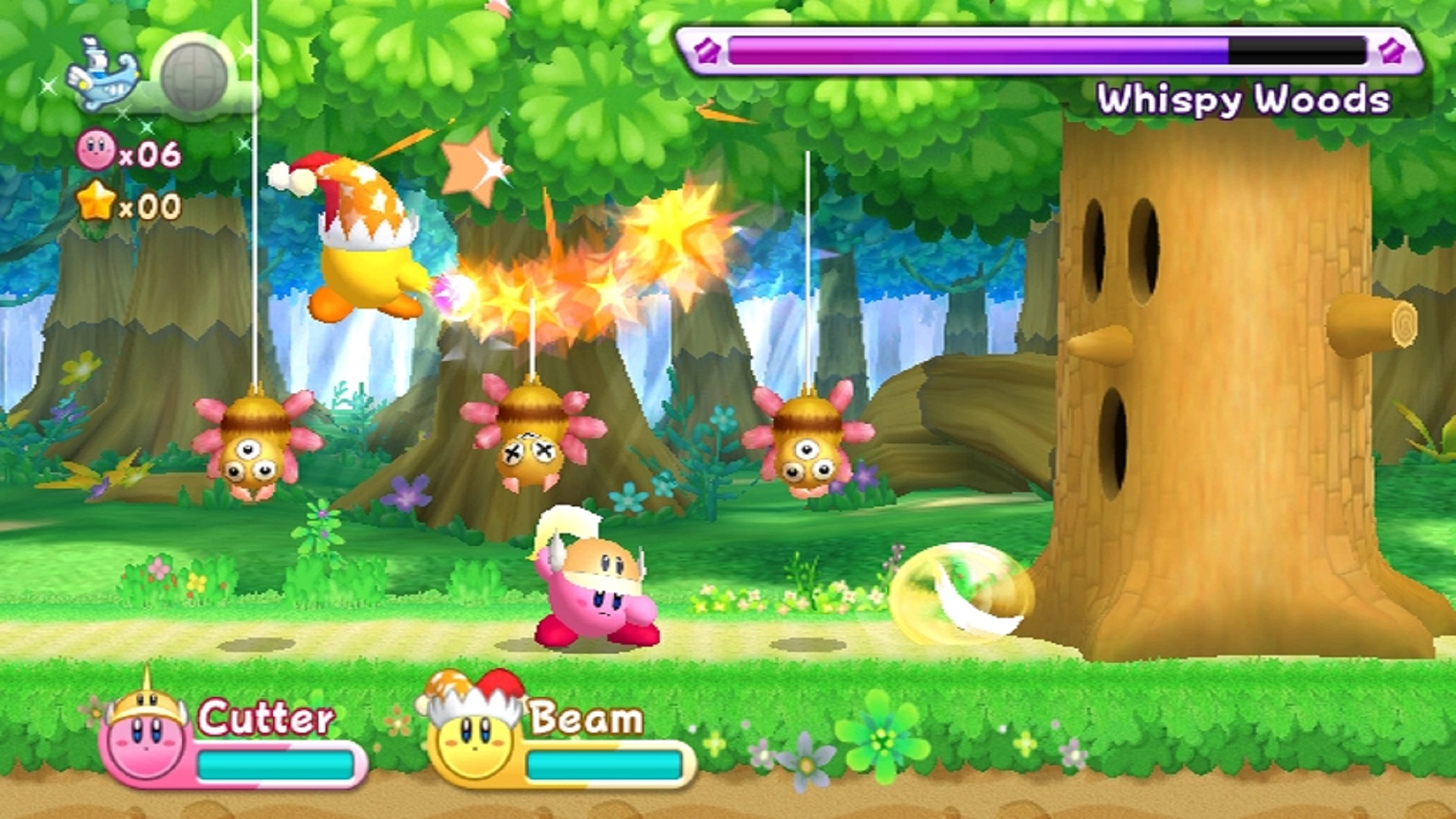
Platform: Wii
Year: 2011
Kirby's final Wii adventure (which is also known as Kirby's Adventure Wii) is as conventional as they come, but still manages to be an excellent outing for Nintendo's pink mascot and even introduces four-player multiplayer. In addition to bringing in four new copy abilities, Kirby can also access insanely powerful Super Abilities that can take out multiple enemies. Kirby can also use a Super Inhale power to suck up many enemies and objects at once.
Kirby: Triple Deluxe
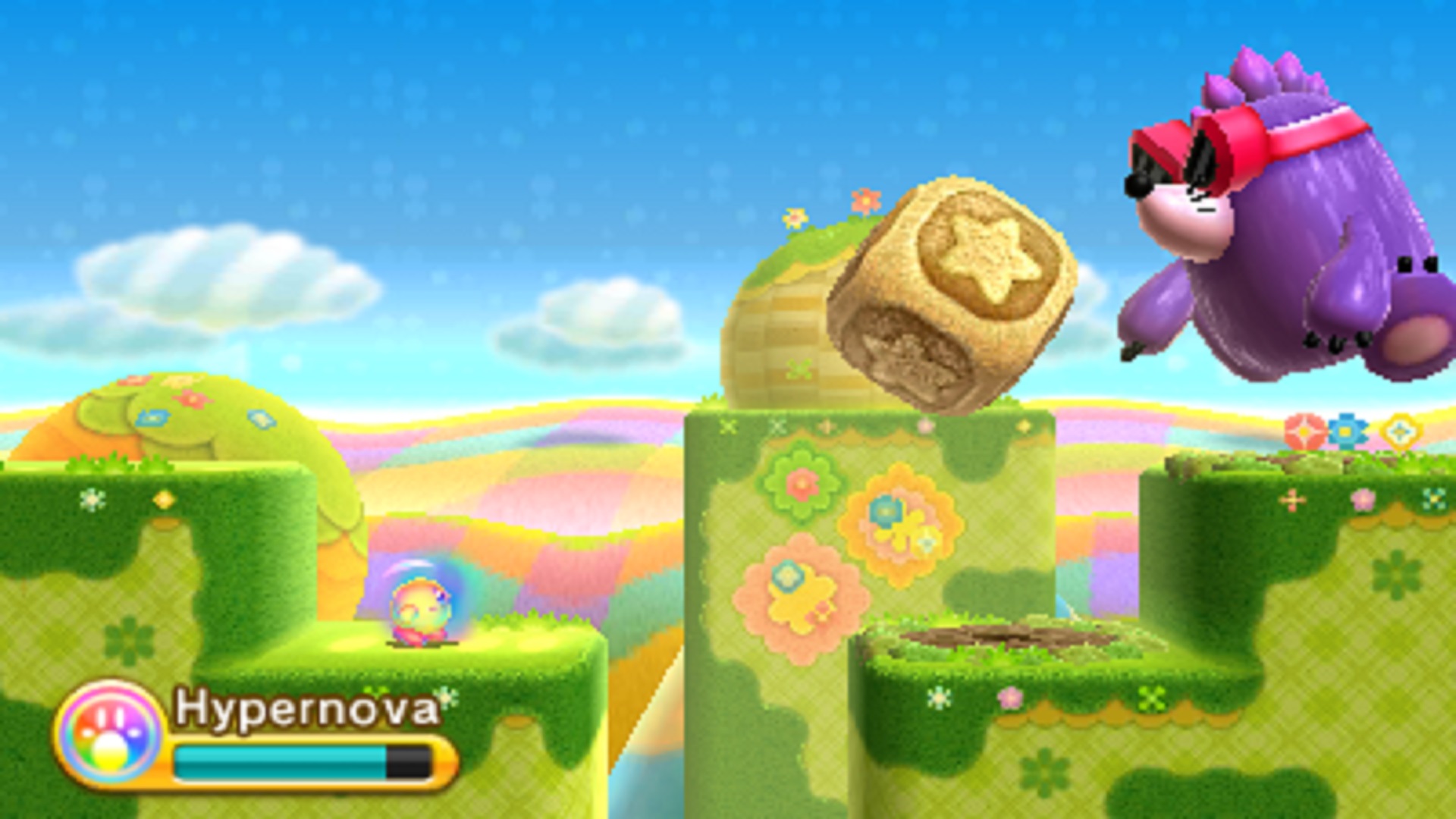
Platform: Nintendo DS
Year: 2014
New copy abilities and the power to jump between two planes are the main mechanics that separate Triple Deluxe from earlier Kirby games. The pink puffball can also become Hypernova Kirby by eating a miracle fruit that enables him to suck up gigantic objects like trees to solve puzzles or defeat large numbers of enemies. Interestingly, Triple Deluxe's minigames, Dedede's Drum Dash and Kirby Fighters, proved popular enough to receive standalone upgraded download releases on Nintendo's eShop.
Kirby and the Rainbow Curse
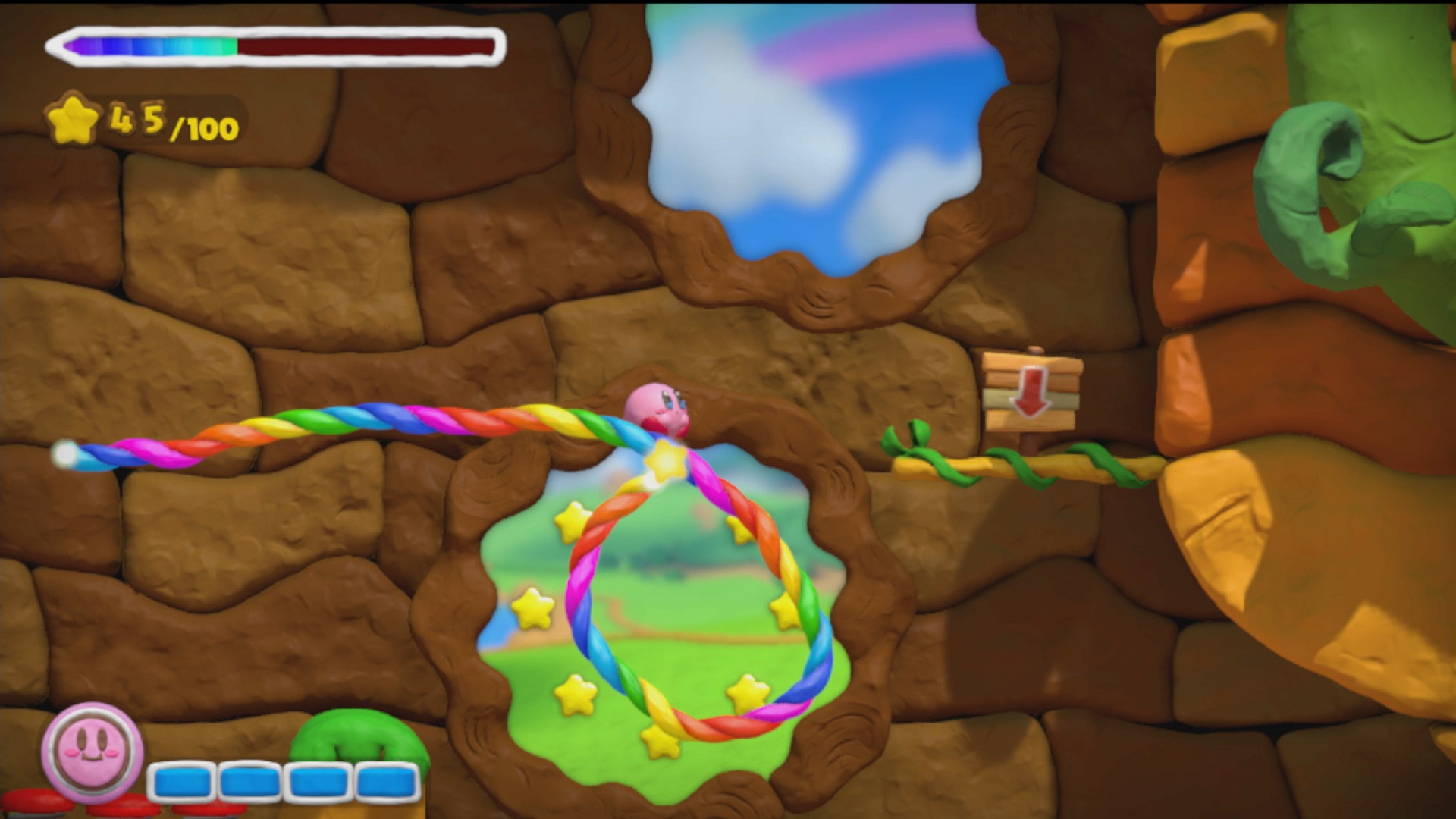
Platform: Wii U
Year: 2015
Not unlike Canvas Curse, the pink hero's only Wii U release allows you to set pathways for Kirby to move across with the stylus touch controls. What really makes Kirby and the Rainbow Curse (also known as Kirby and the Rainbow Paintbrush) really stand out is it's delightful claymation style, which brings Kirby to life in a way you can't help but be charmed by. There's no denying that it's a stunning-looking game thanks to its distinctive aesthetic, which continues to hold up on the less popular platform.
Kirby Planet Robobot
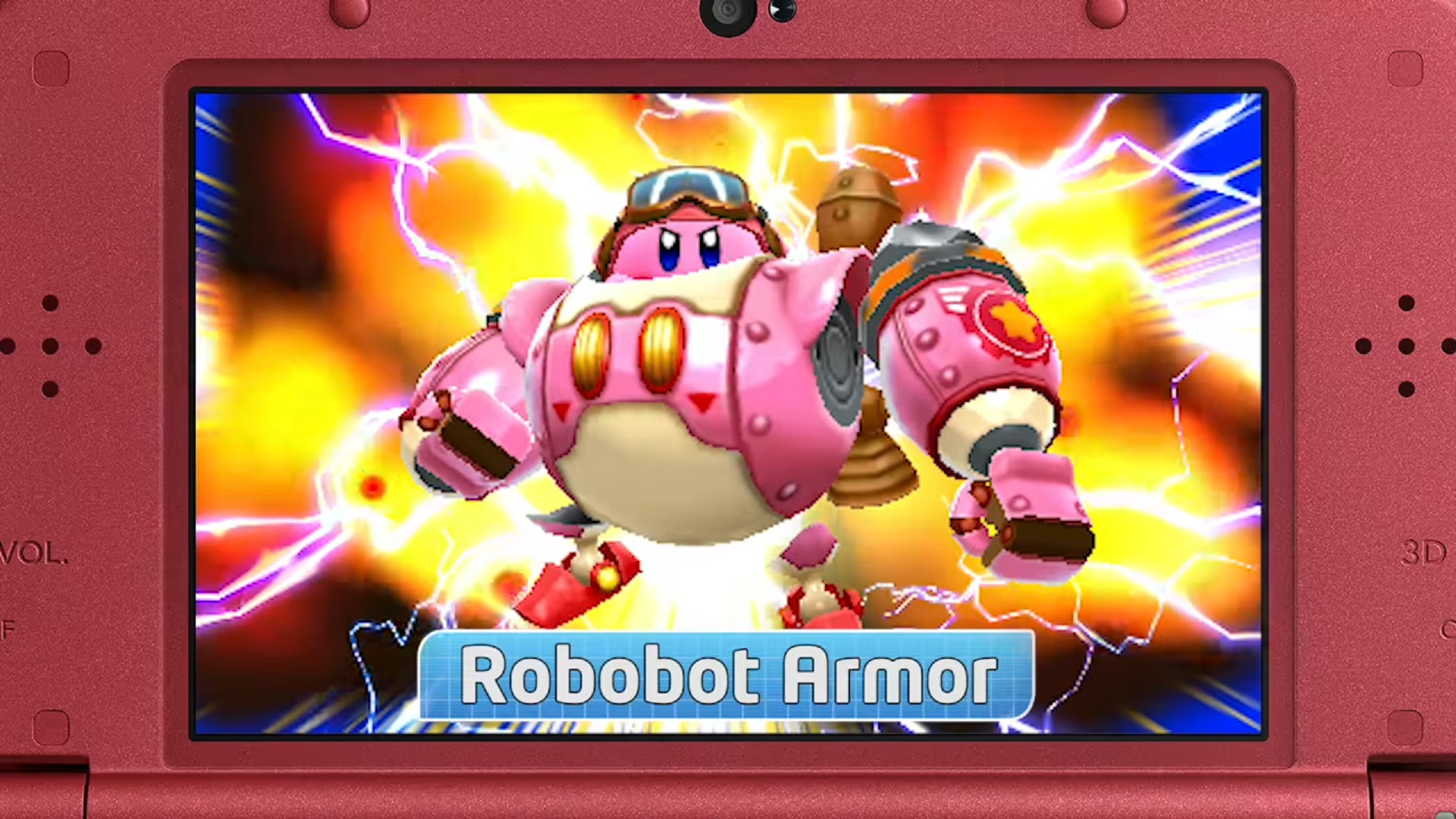
Platform: Nintendo 3DS
Year: 2016
The last big adventure for Kirby on 3DS is also arguably one of the inhaling hero's best games. In addition to adding several new copy abilities, Kirby can now commandeer gigantic mechs, which greatly change the gameplay and make it tremendously fun to play. The design of each level also makes the most of the 3D element of the 3DS by playing around with the depth of field to put Kirby in the background and foreground of every stage. Like Triple Deluxe, its minigames - Kirby Team Clash and Kirby's Blowout Blast - have also become standalone releases.
Kirby Star Allies
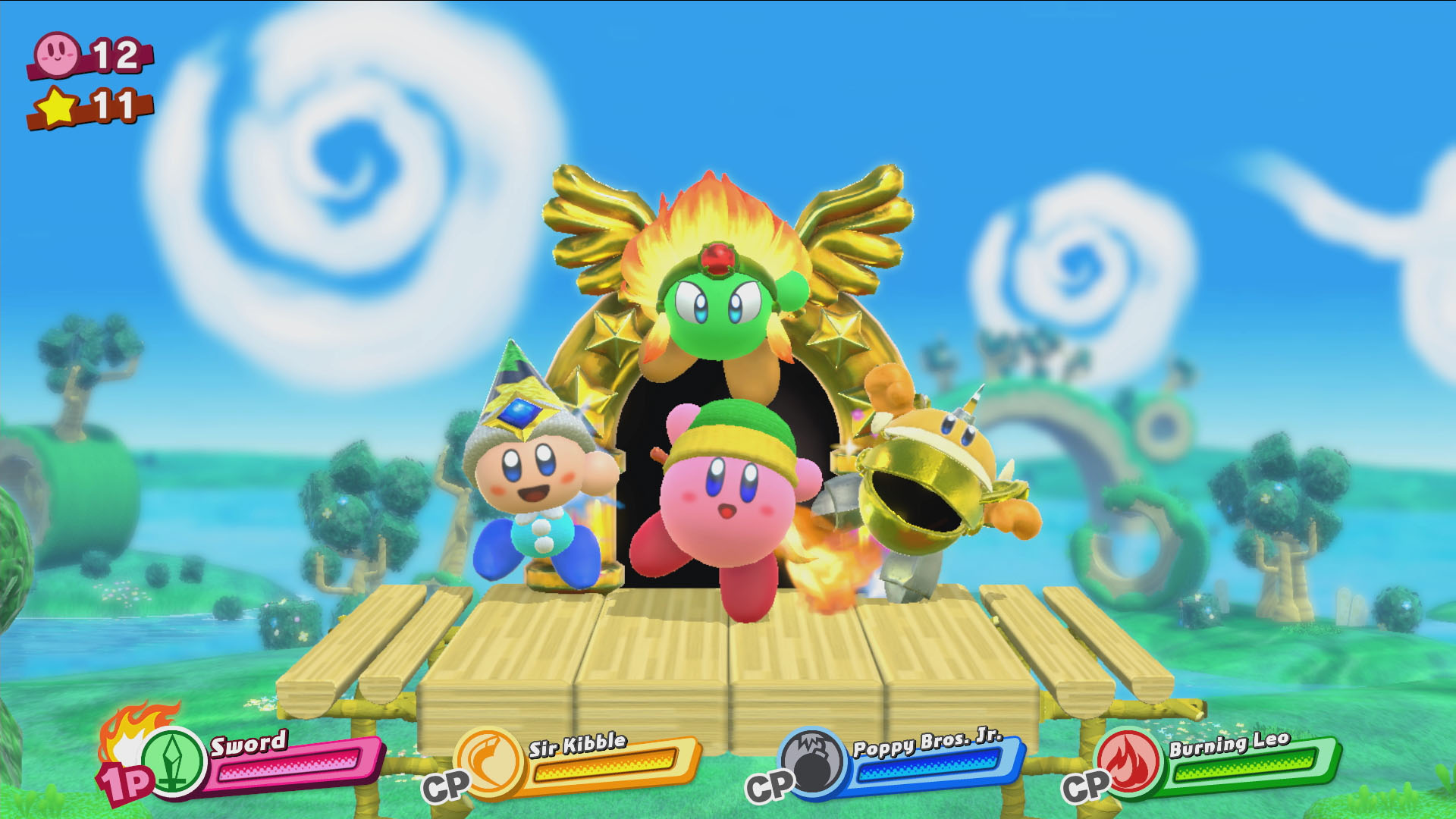
Platform: Nintendo Switch
Year: 2018
Kirby Star Allies brought the pink puffball to the Switch for a delightful little offering for up to four players. In this colorful adventure that delivers the series' signature platforming action, Kirby gains the power to spread love which allows him to recruit allies with various powers to help you during each stage. If you're playing solo, they're controlled by AI, but you can also play with pals locally. A selection of familiar characters from the Kirby series were also added after release that can be summoned to join you. While it didn't stay too far from the classic Kirby experience, it's one very adorable entry - Kirby even kisses accompanying allies to heal them.
Kirby and the Forgotten Land
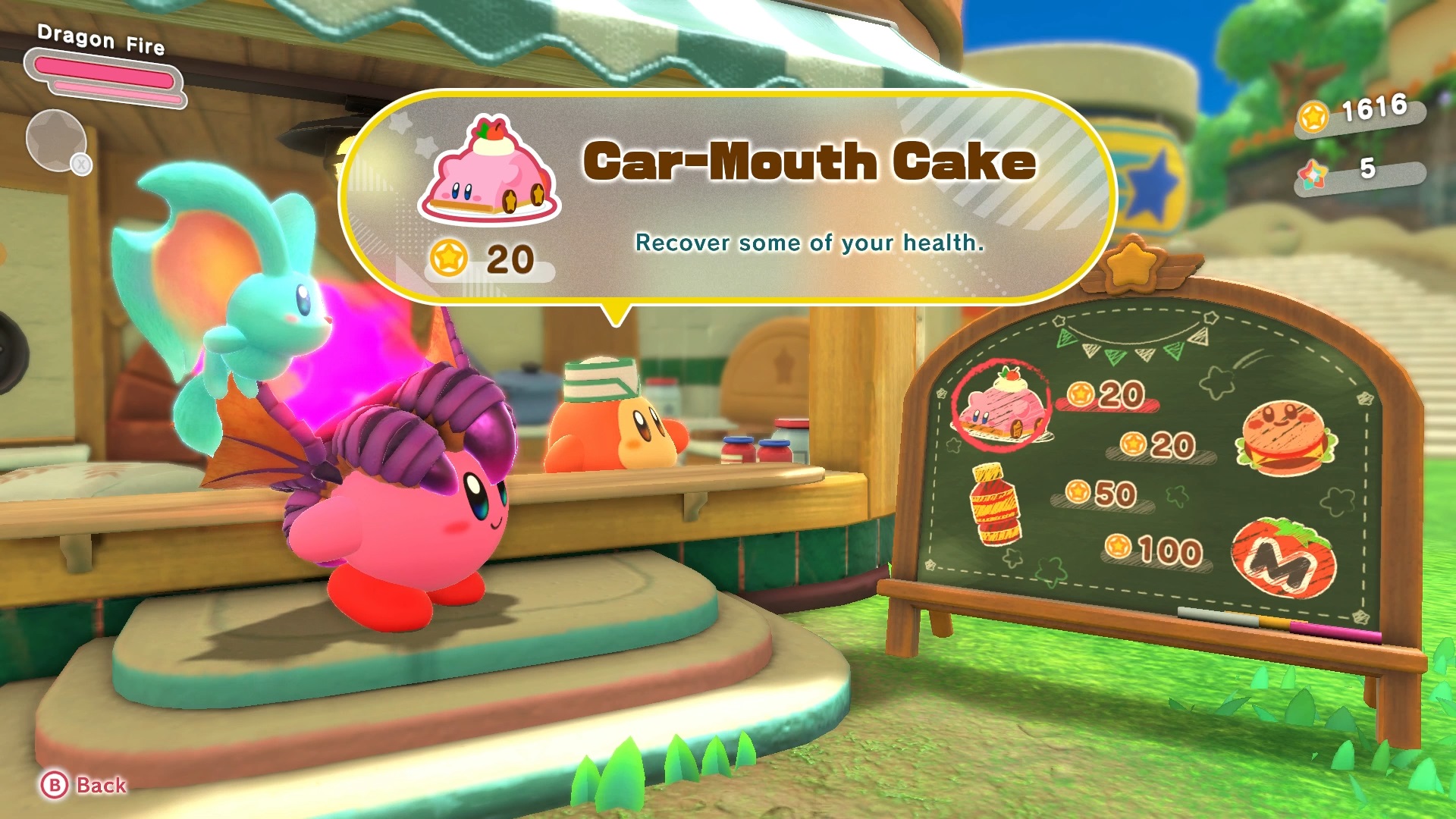
Platform: Nintendo Switch
Year: 2022
Kirby's latest adventure on the Switch took the pink hero to new heights. Set in a mysterious setting full of the decaying ruins of a past civilization, Forgotten Land is one very beautiful game, packed with creative stages that are an absolute treat to venture into. What really sets it apart, though, is the amount of freedom you have within the levels. For the first time, you're no longer confined to the side-scrolling format we've come to now, with more open stages than ever before. Along with a host of memorable additions such as the wonderfully weird Mouthful Mode, upgradable copy abilities, and Waddle Dee Town, Kirby and the Forgotten Land is one of the very best games in the series to date.
More Kirby games to try
- Kirby's Star Stacker, 1997, Super Famicom
- Kirby Slide, 2003, Game Boy Advance e-Reader
- Kirby Super Star Ultra, 2008, Nintendo DS
- 3D Classics: Kirby's Adventure, 2011, Nintendo 3DS
- Kirby's Dream Collection: Special Edition, 2012, Wii
- Kirby Fighter's Deluxe, 2014, Nintendo 3DS
- Dedede's Drum Dash Deluxe, 2014, Nintendo 3DS
- Team Kirby Clash Deluxe, 2017, Nintendo 3DS
- Kirby's Blowout Blast, 2017, Nintendo 3DS
Want to know which adventures make it into our top 10? Here's our pick of the best Kirby games.
Highly respected within the gaming industry by both publishers and development studios alike, games™ is one of the most esteemed and trusted magazines in the field. The soaring production values and highly knowledgeable team secured four industry awards, and the unflinching and unbiased opinion elevated the magazine’s status to the most trusted in the business. With a dedicated retro gaming section, features that cut through the industry, and the biggest reviews, games™ is one of the most comprehensive video game magazines on the market and the perfect choice for anyone who takes gaming seriously.
- Heather WaldSenior staff writer


